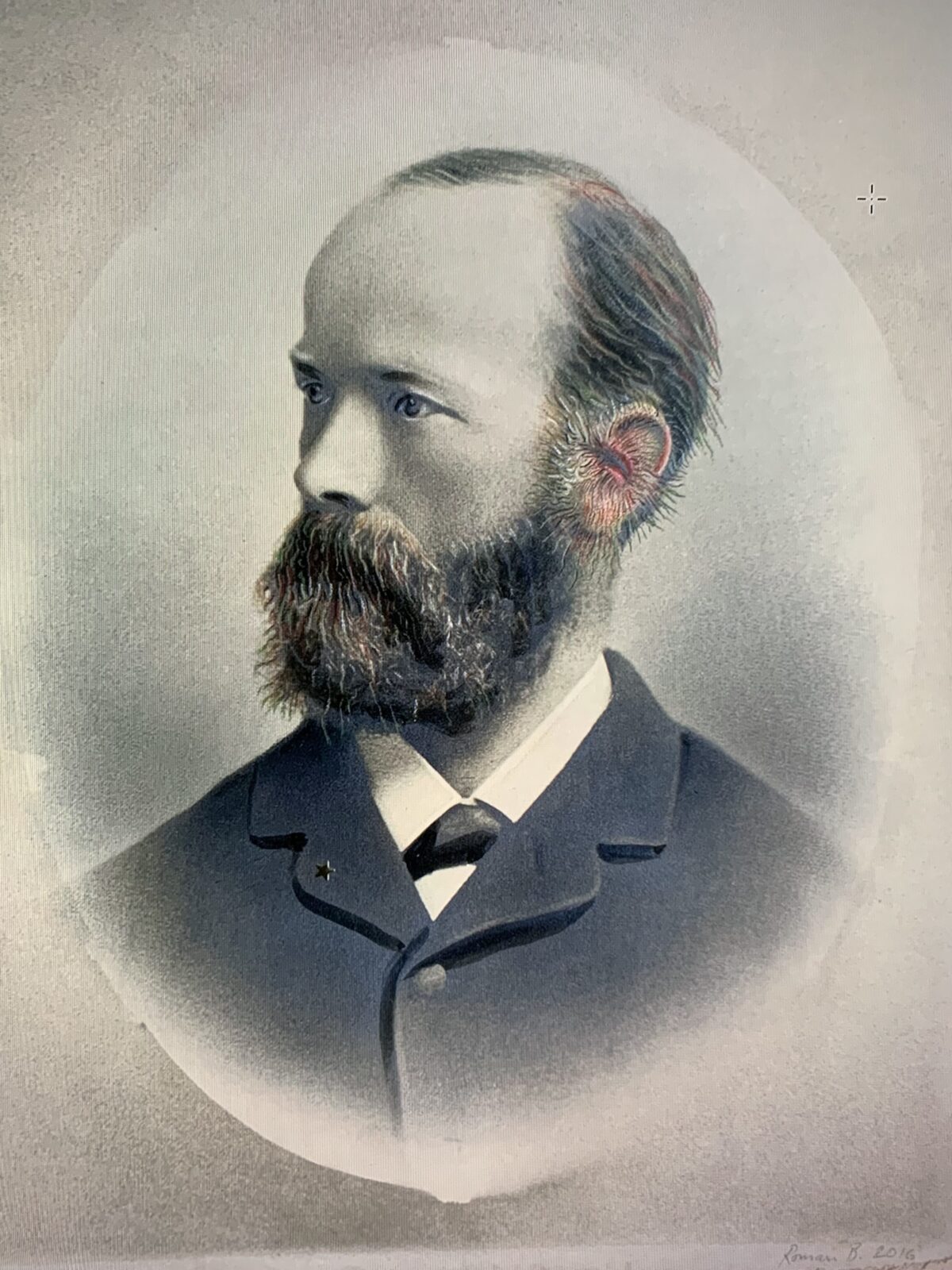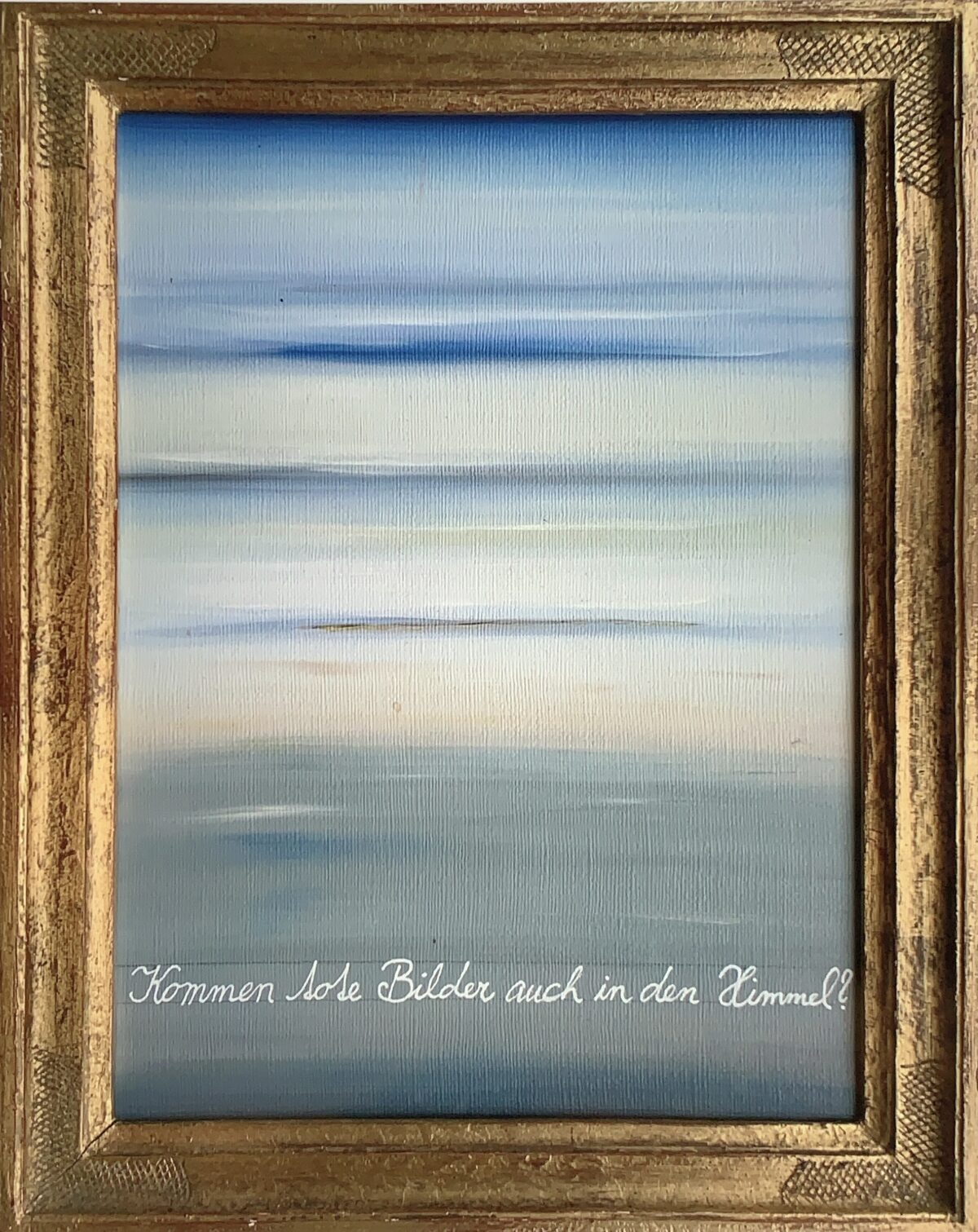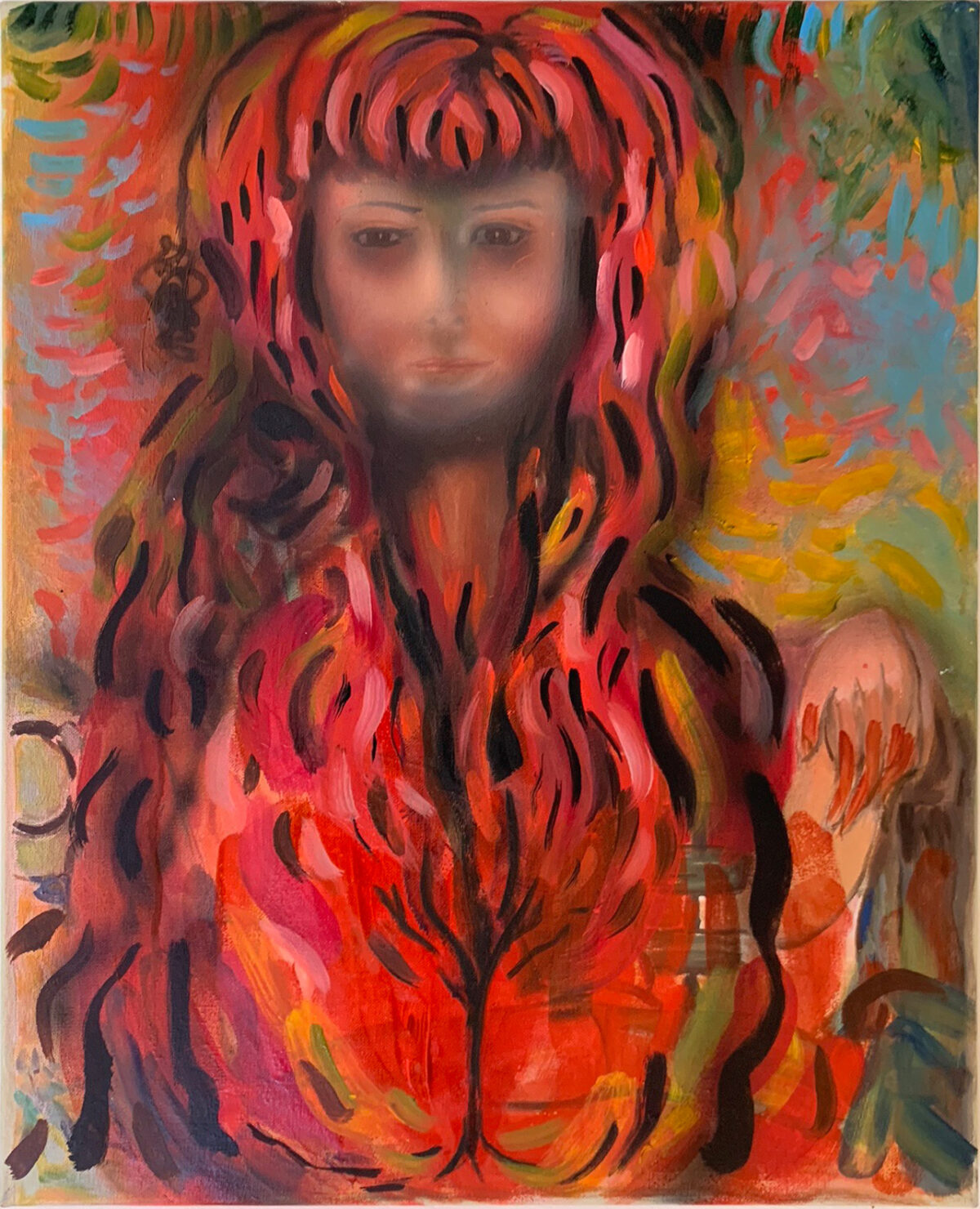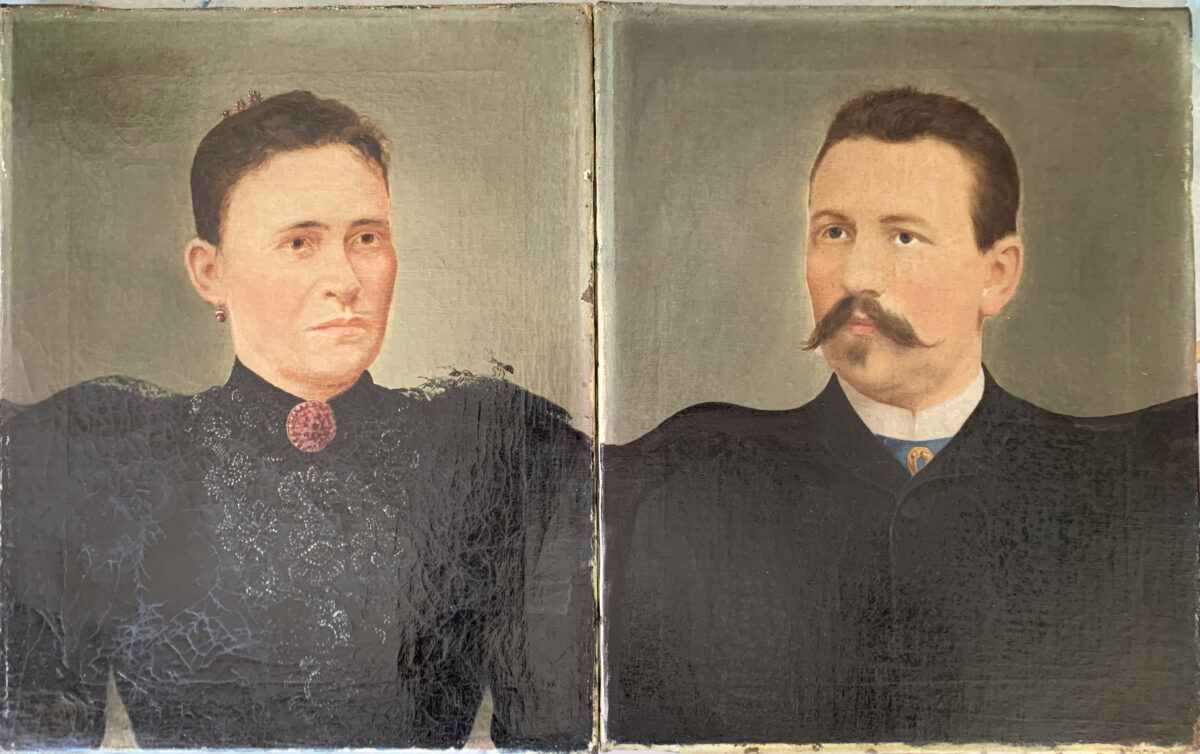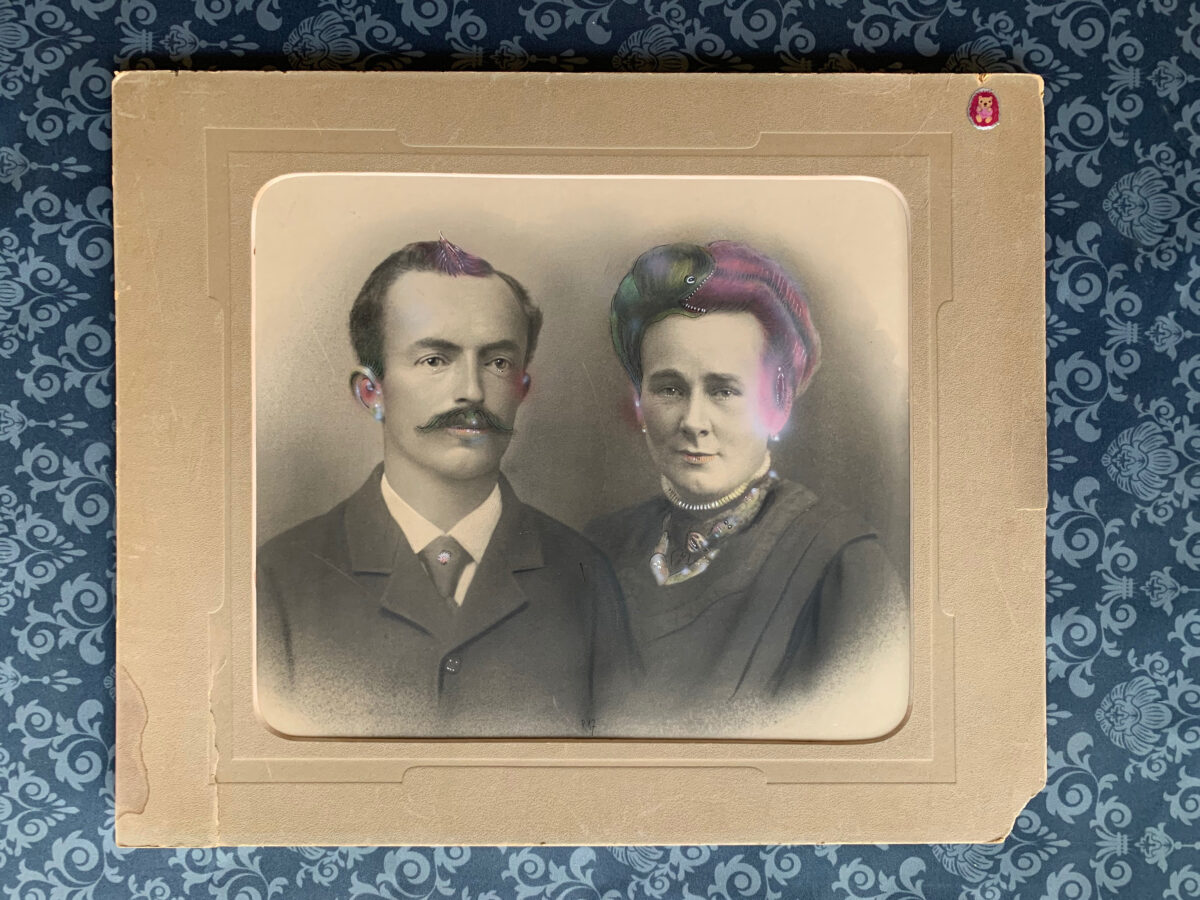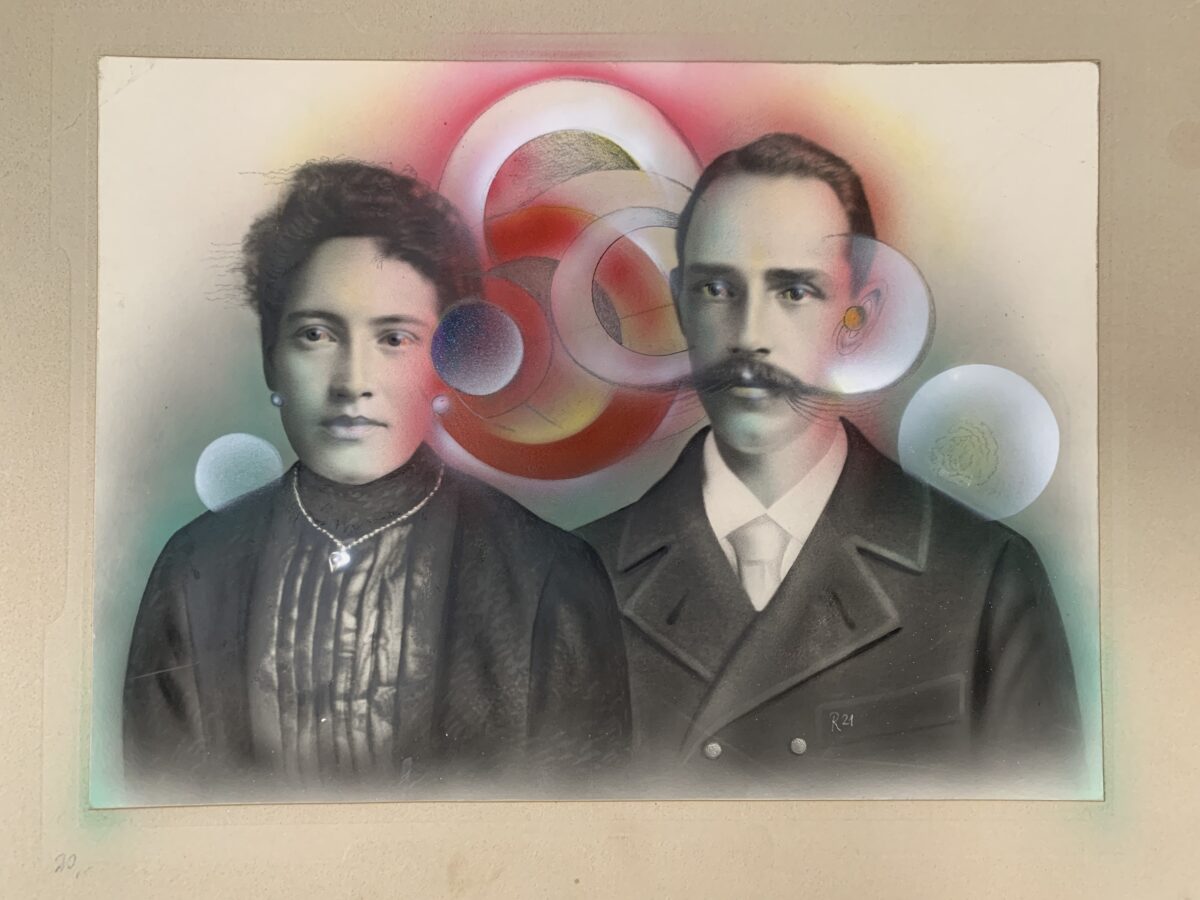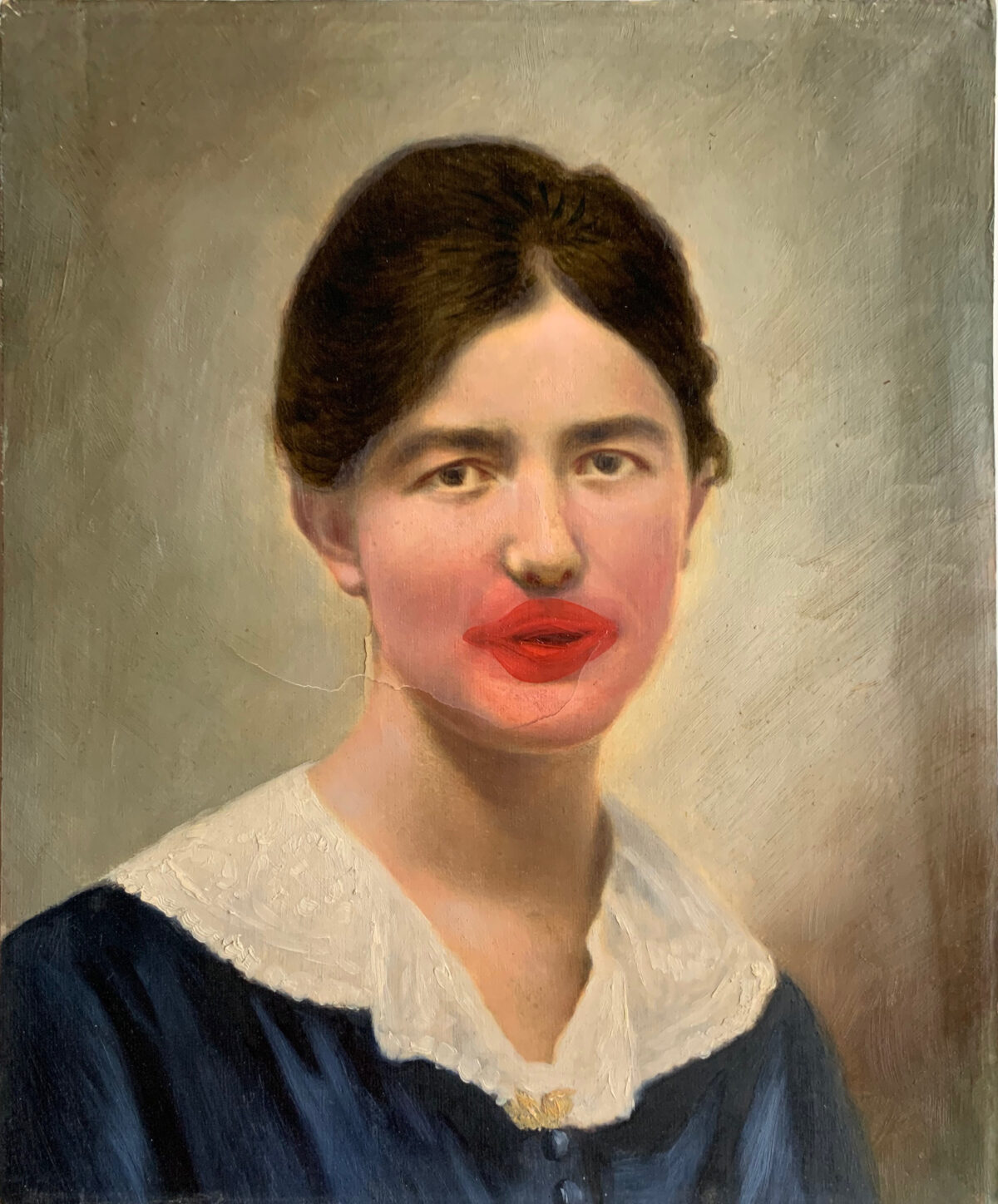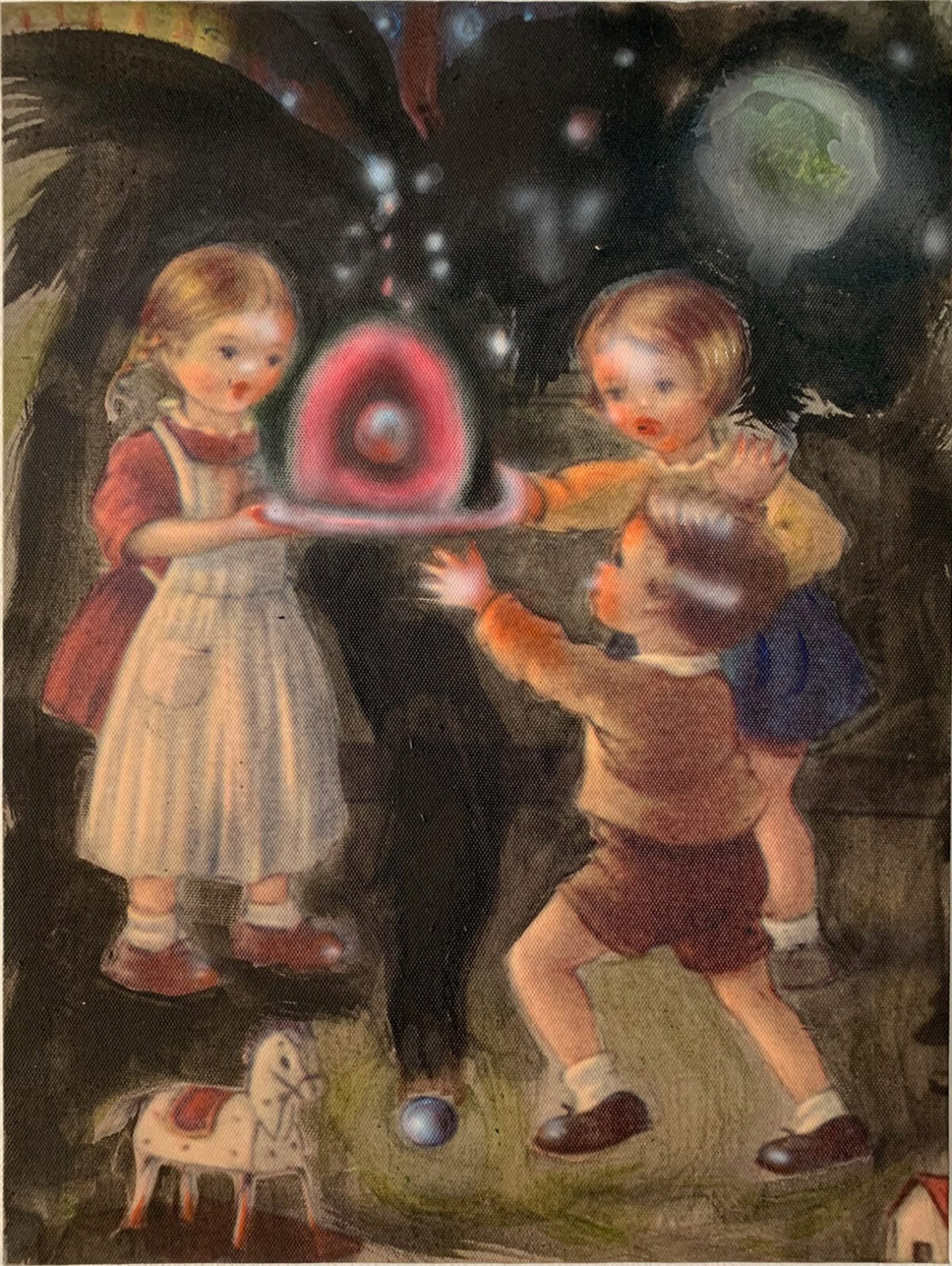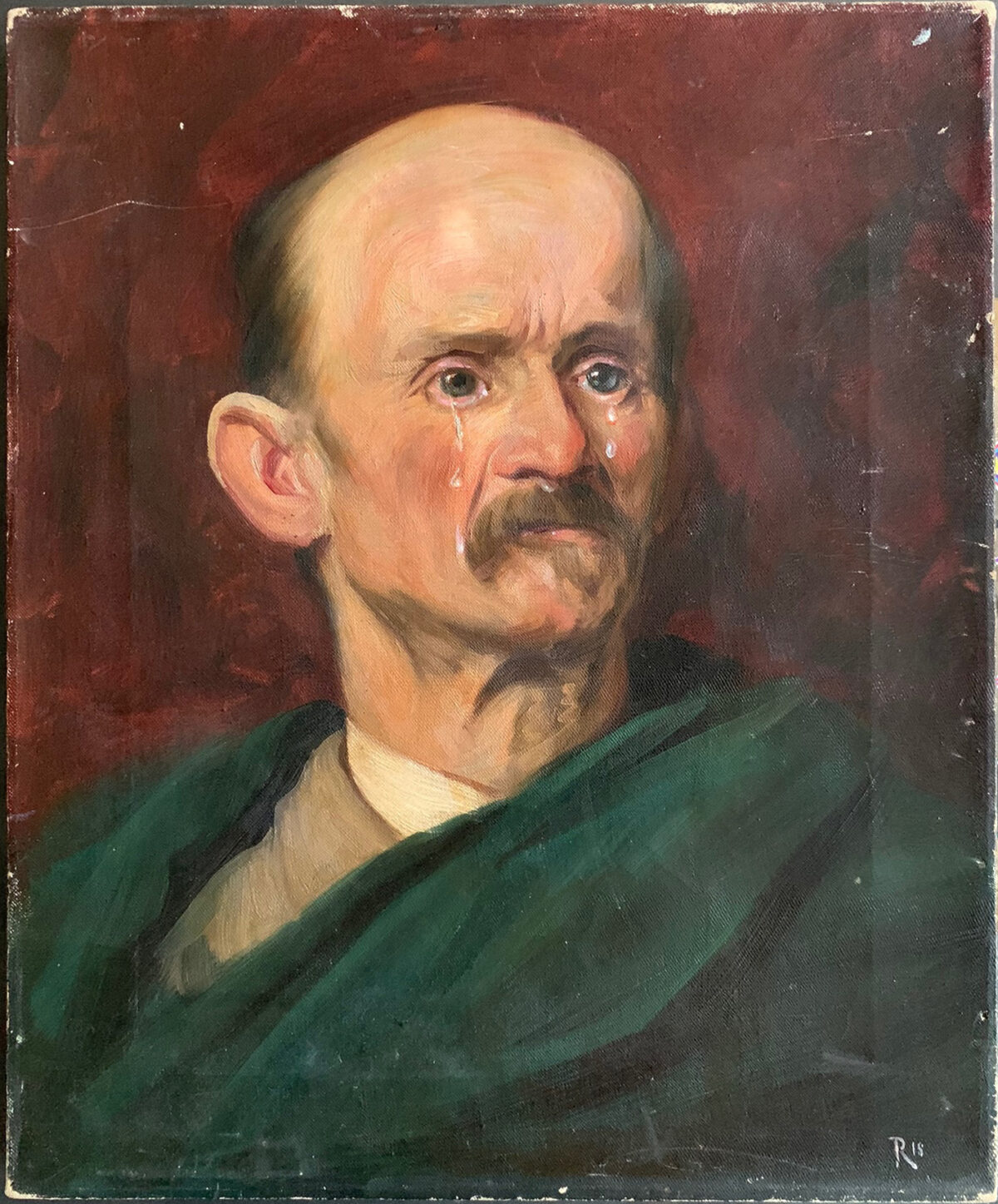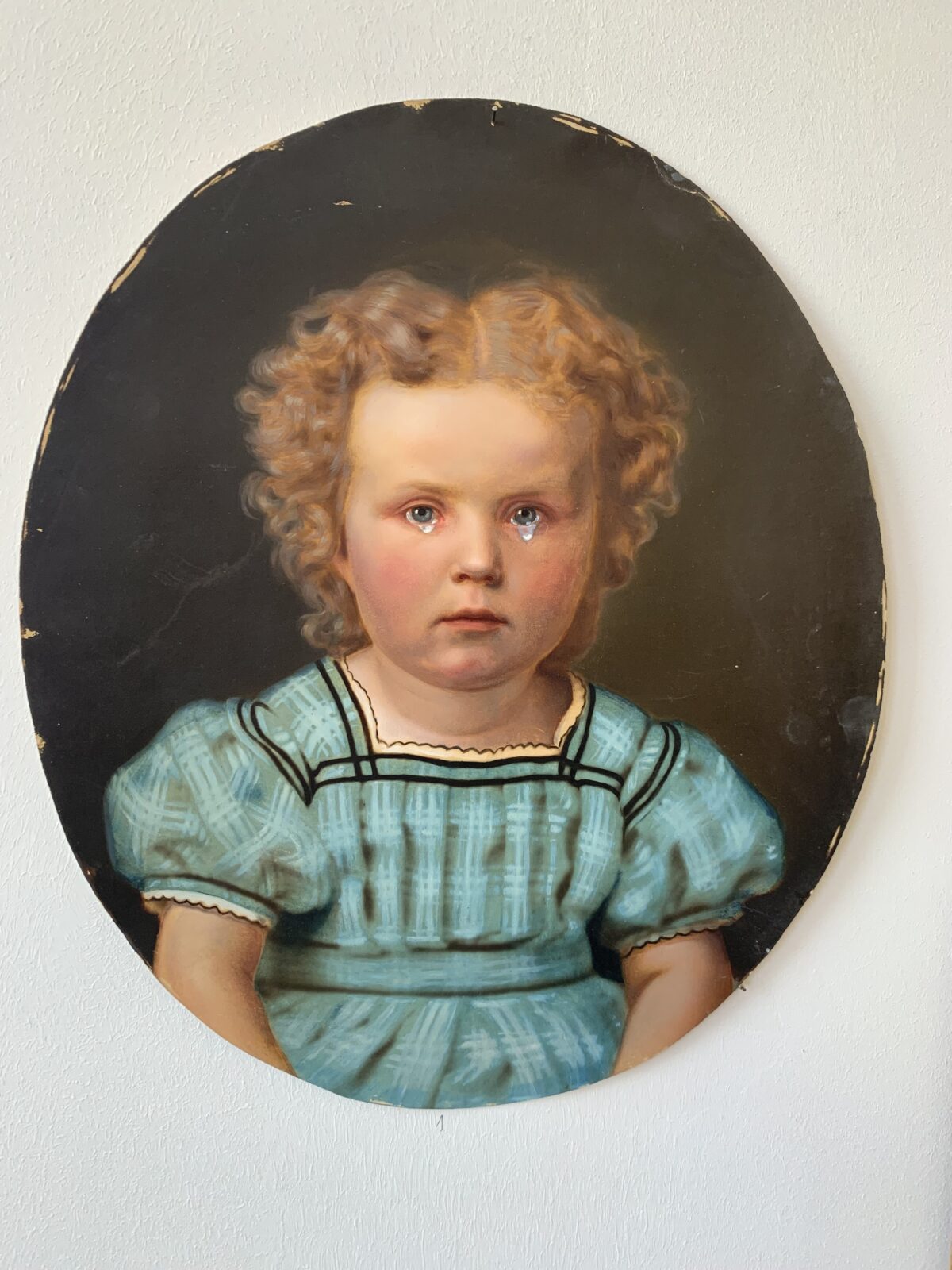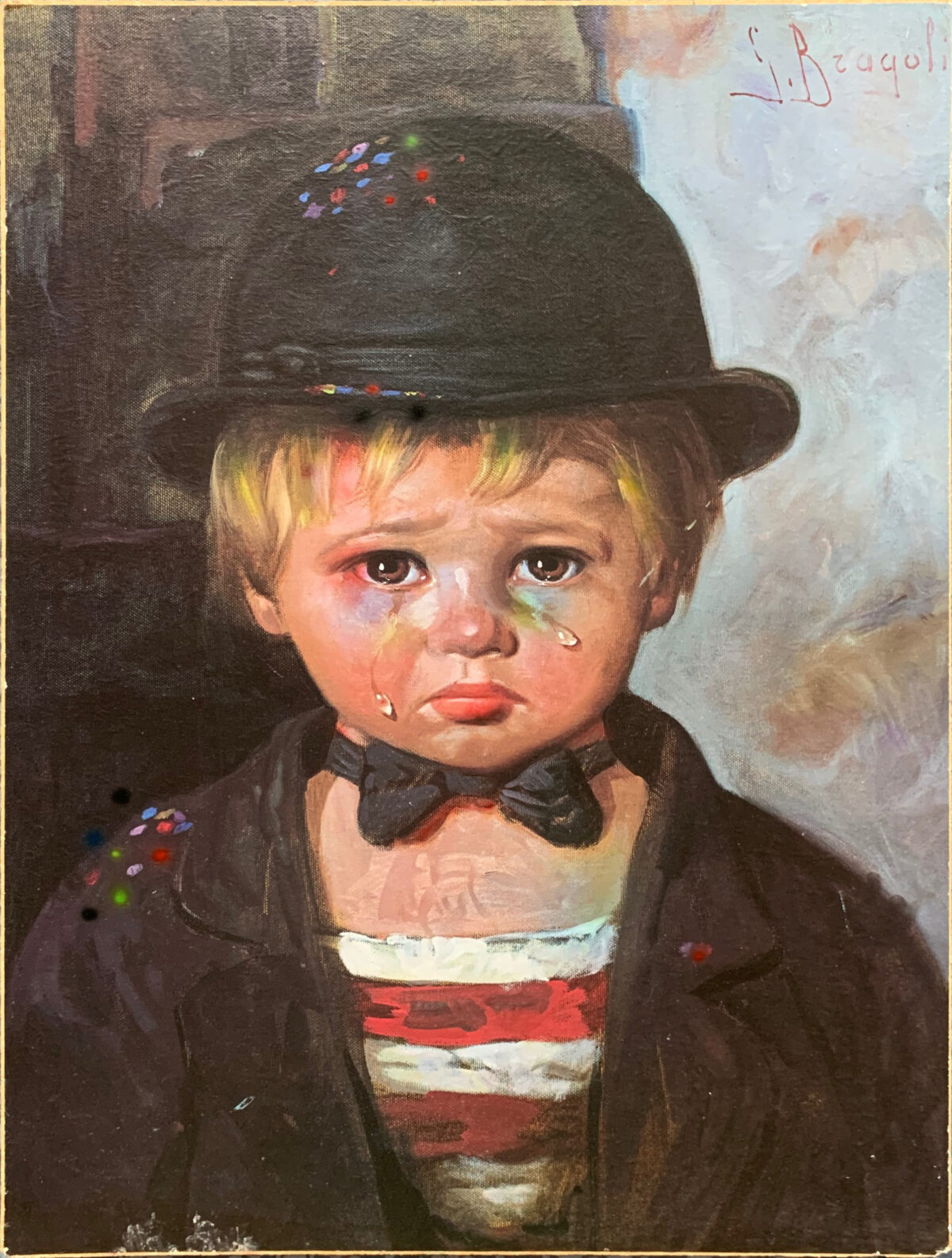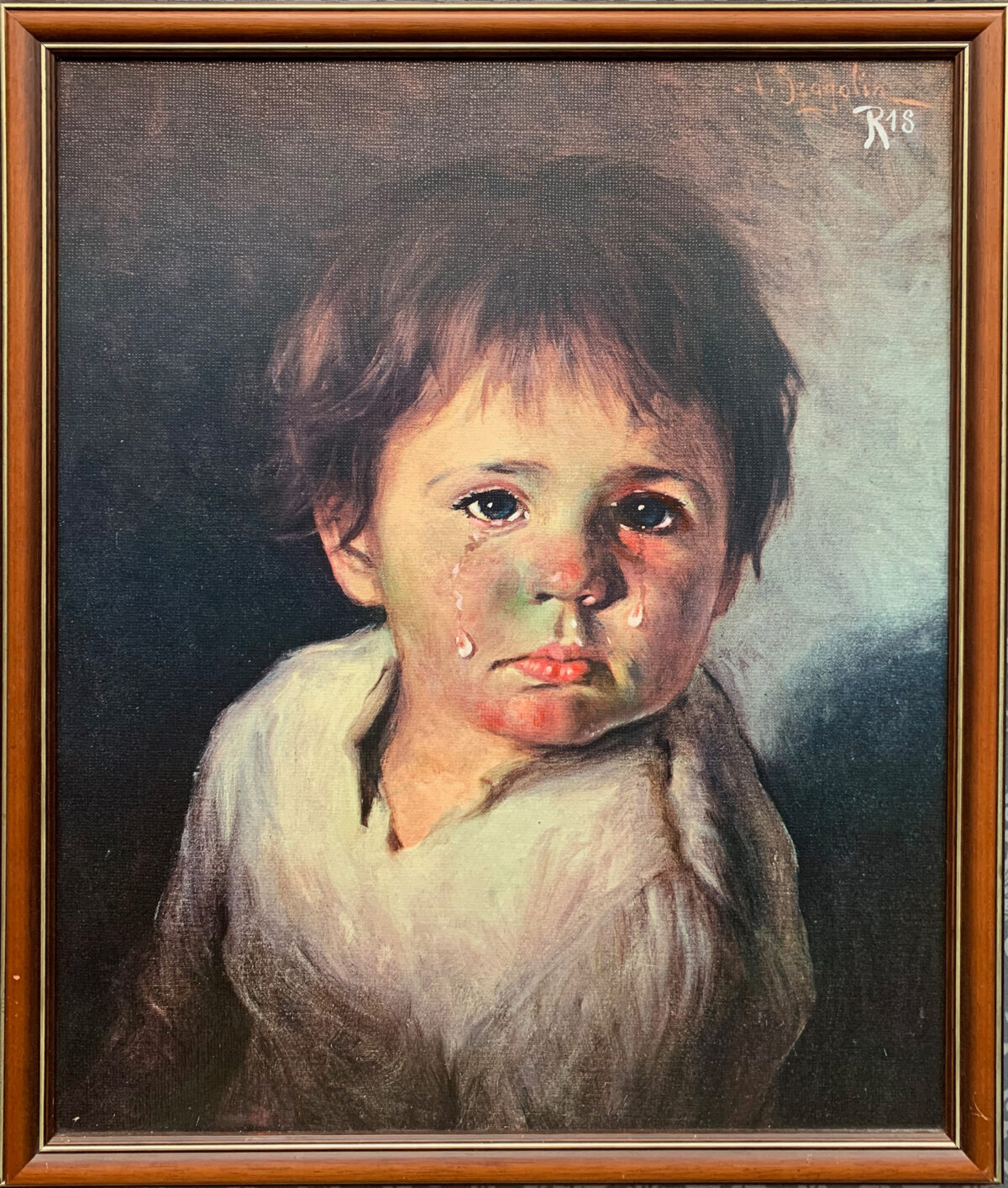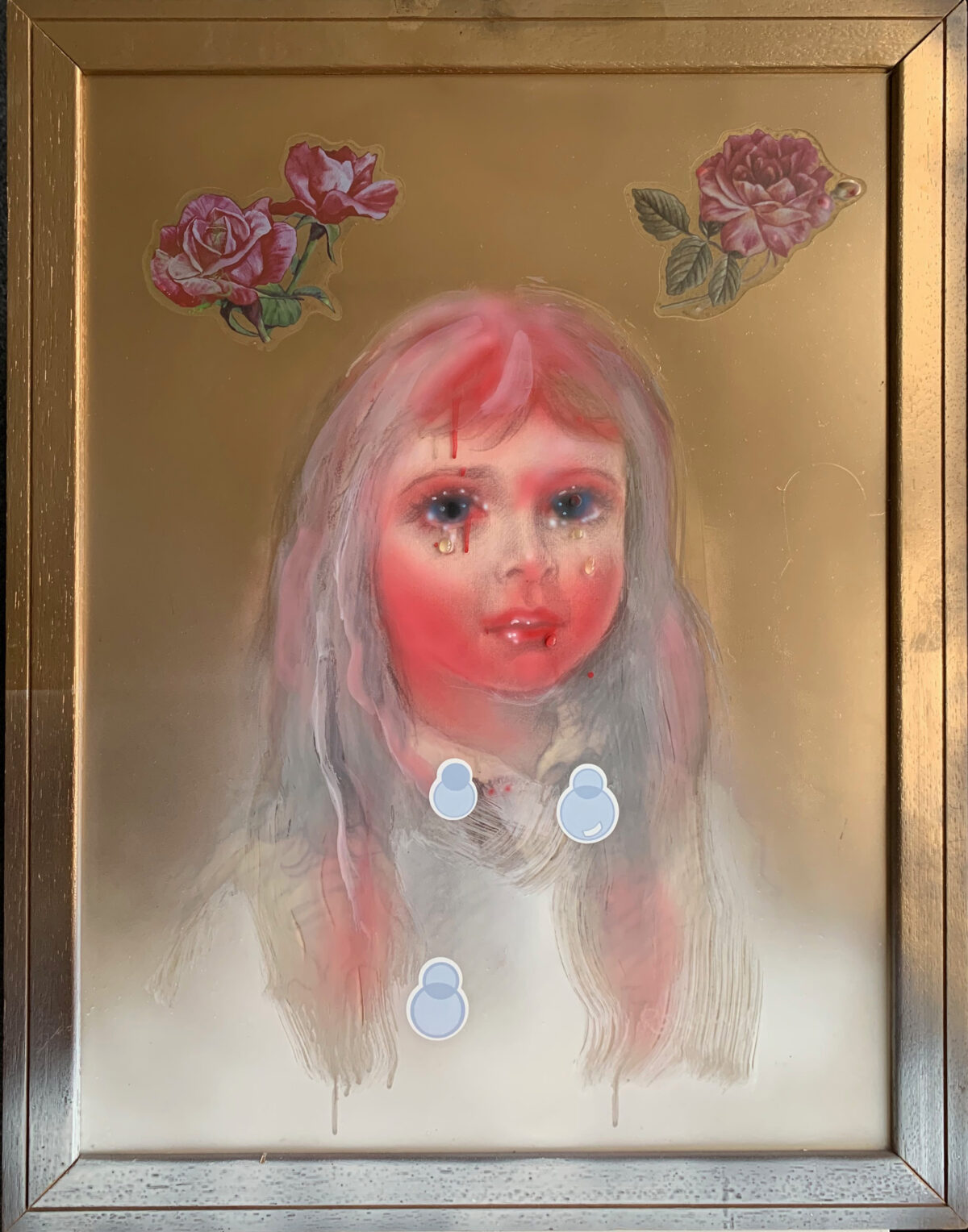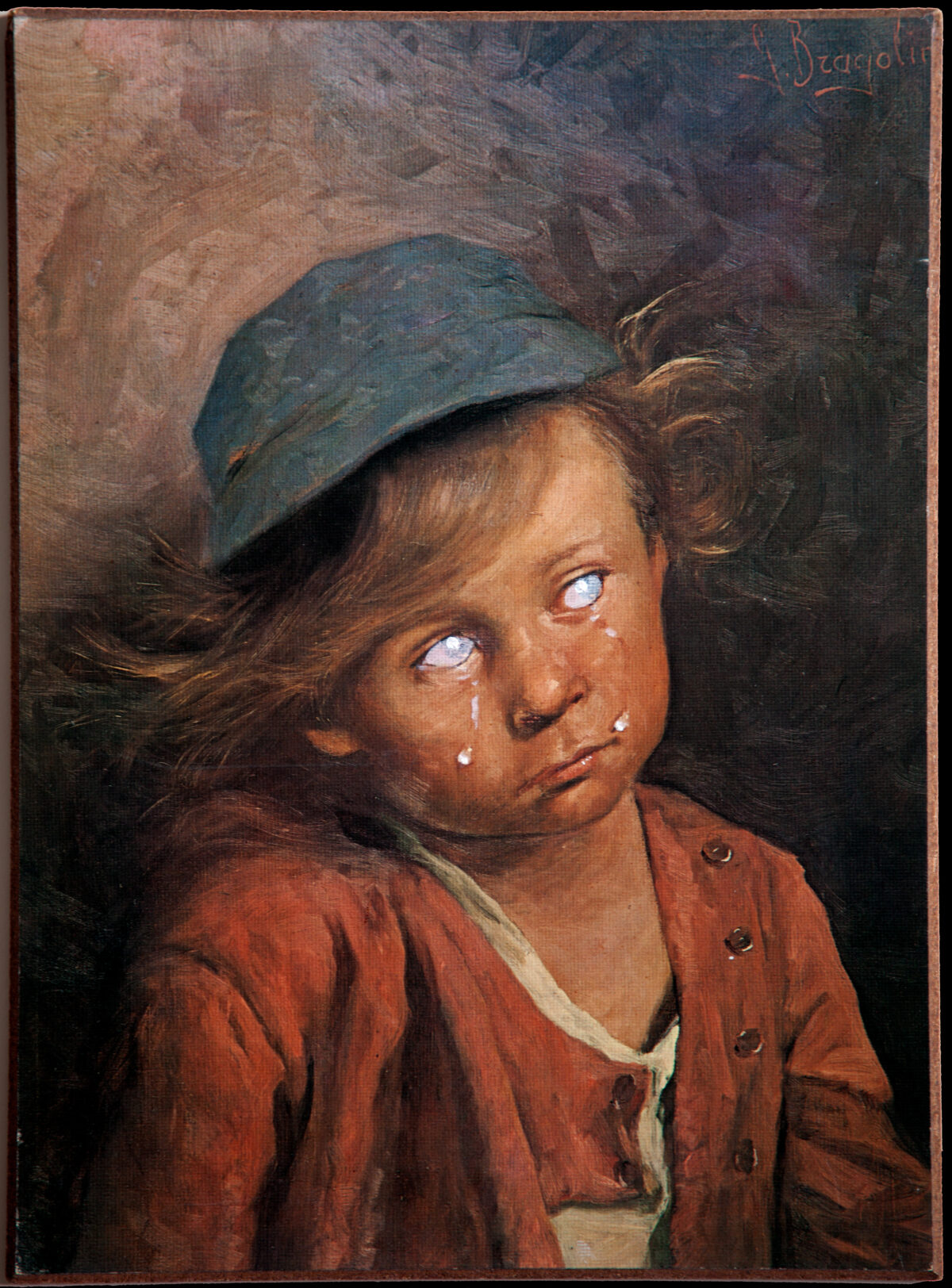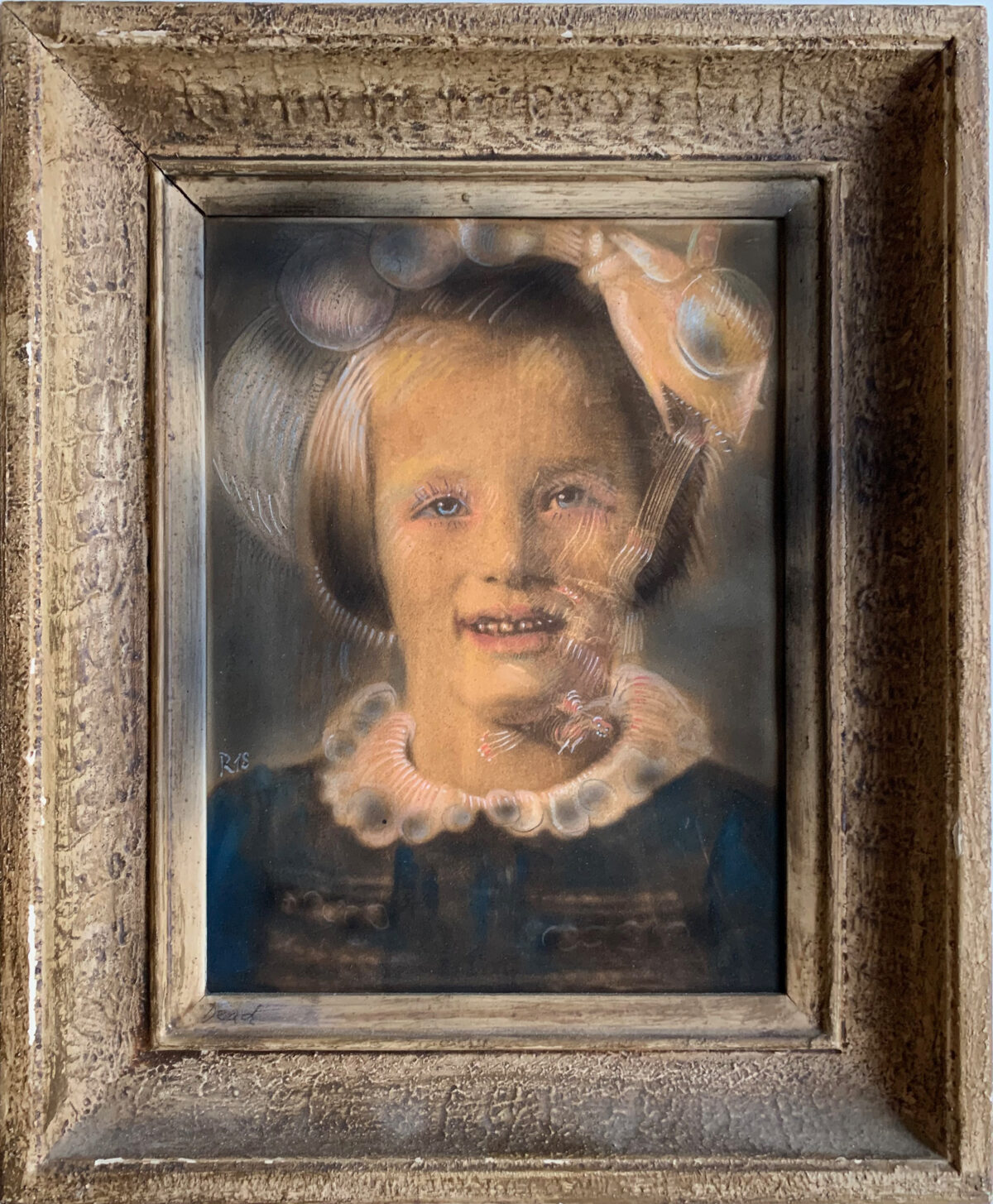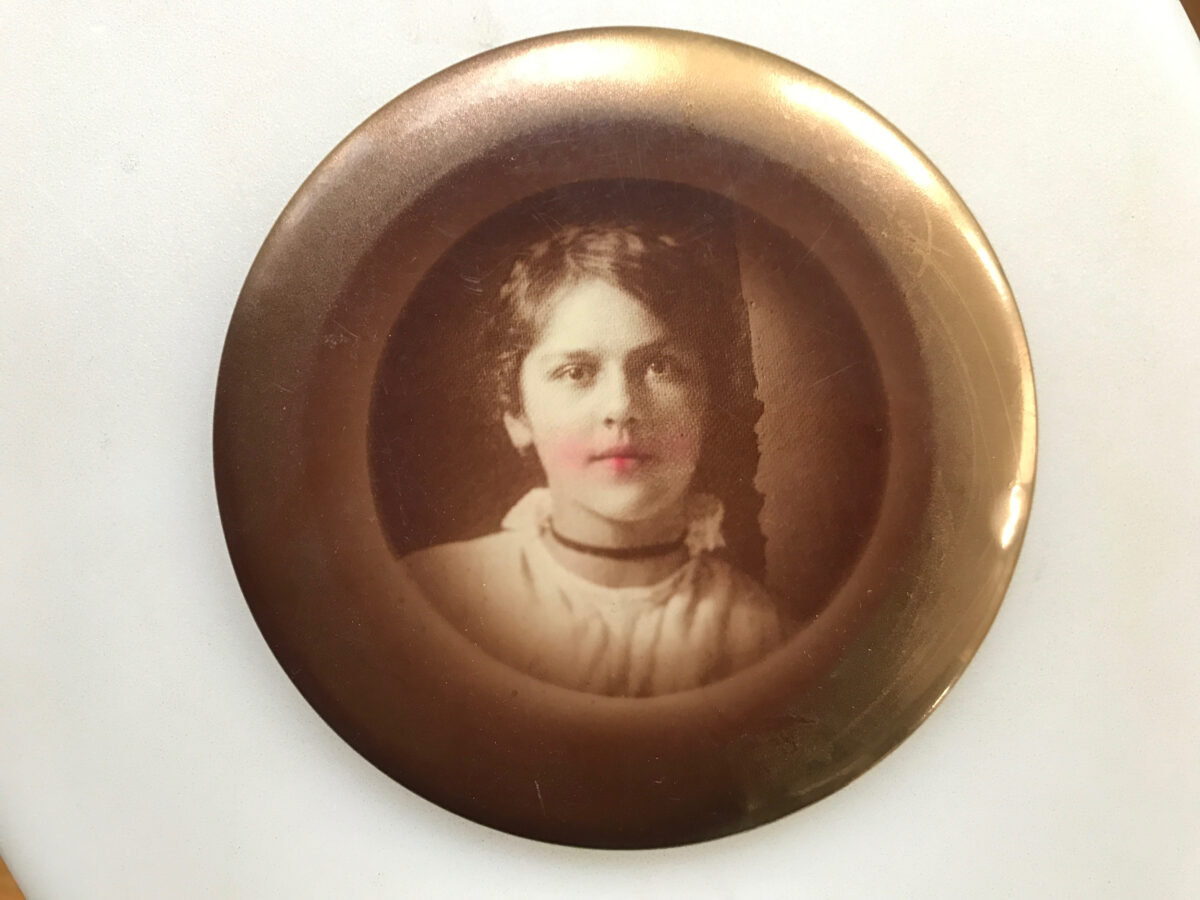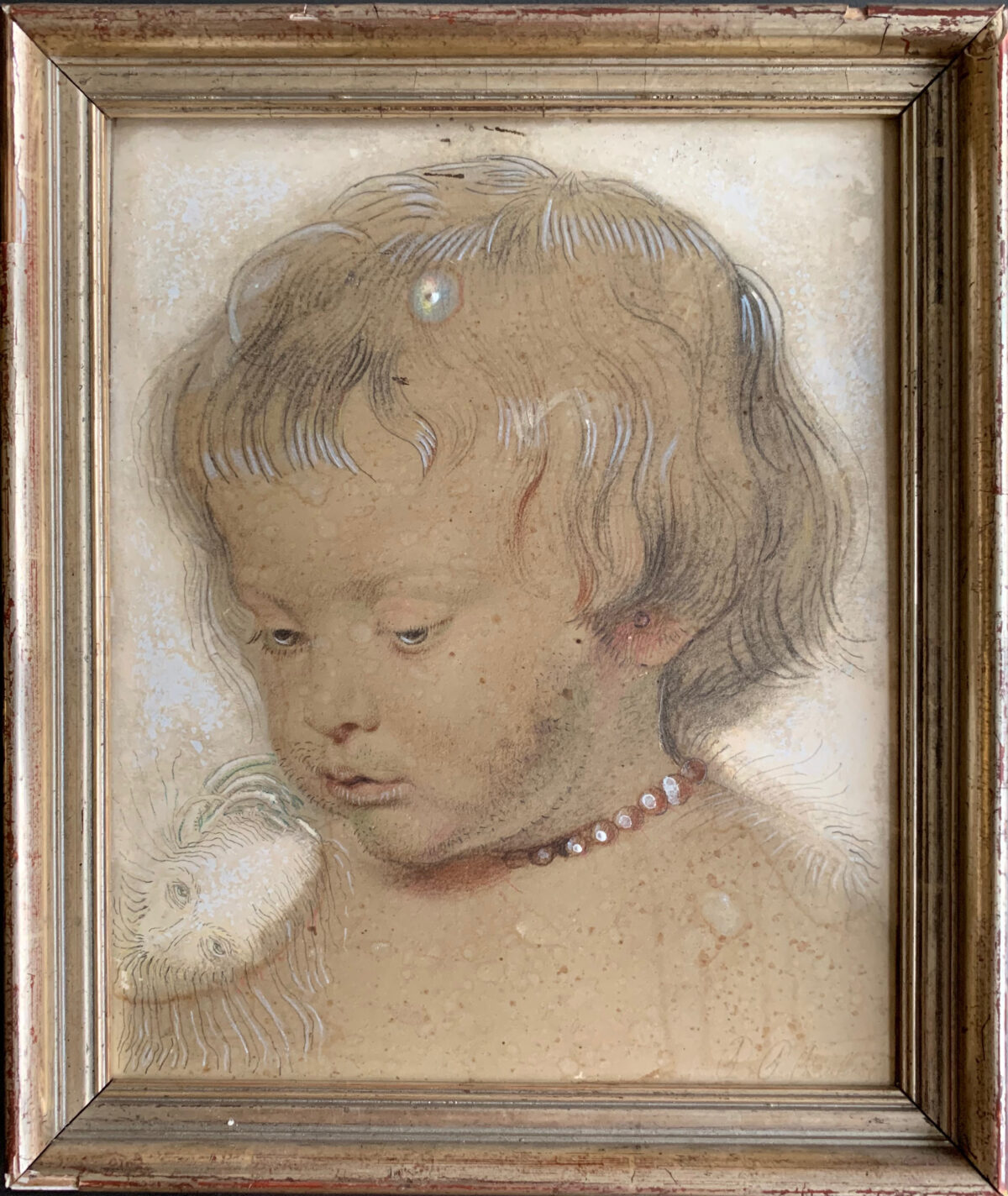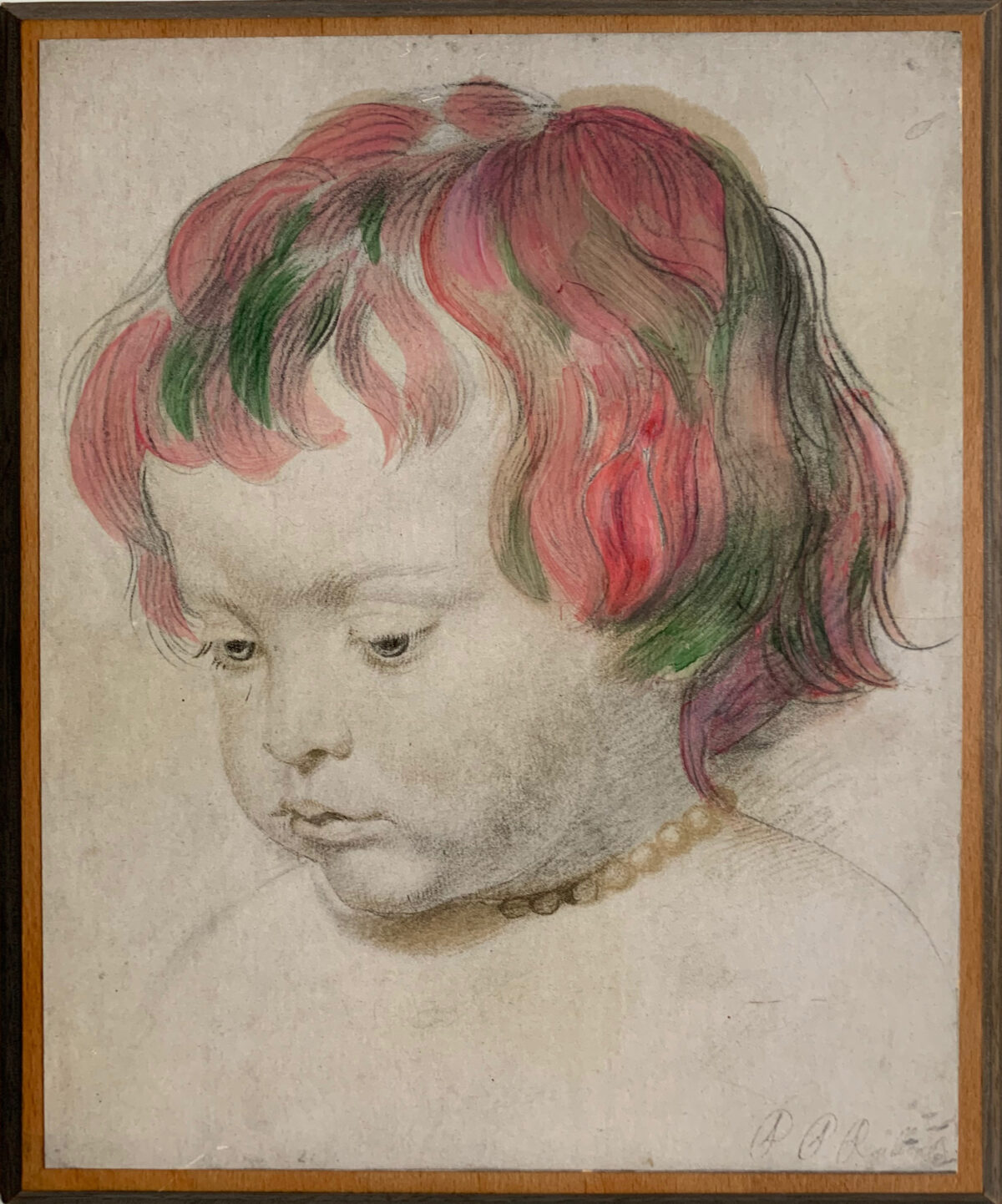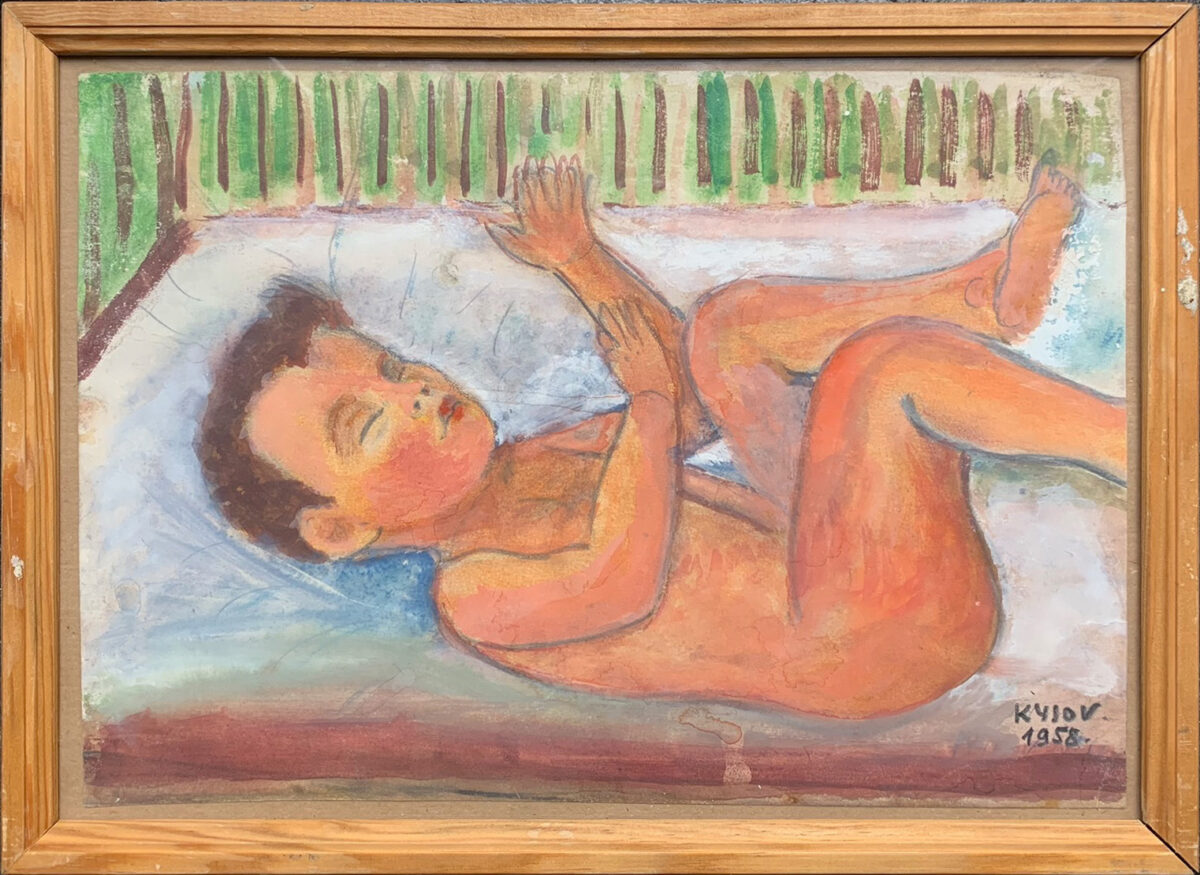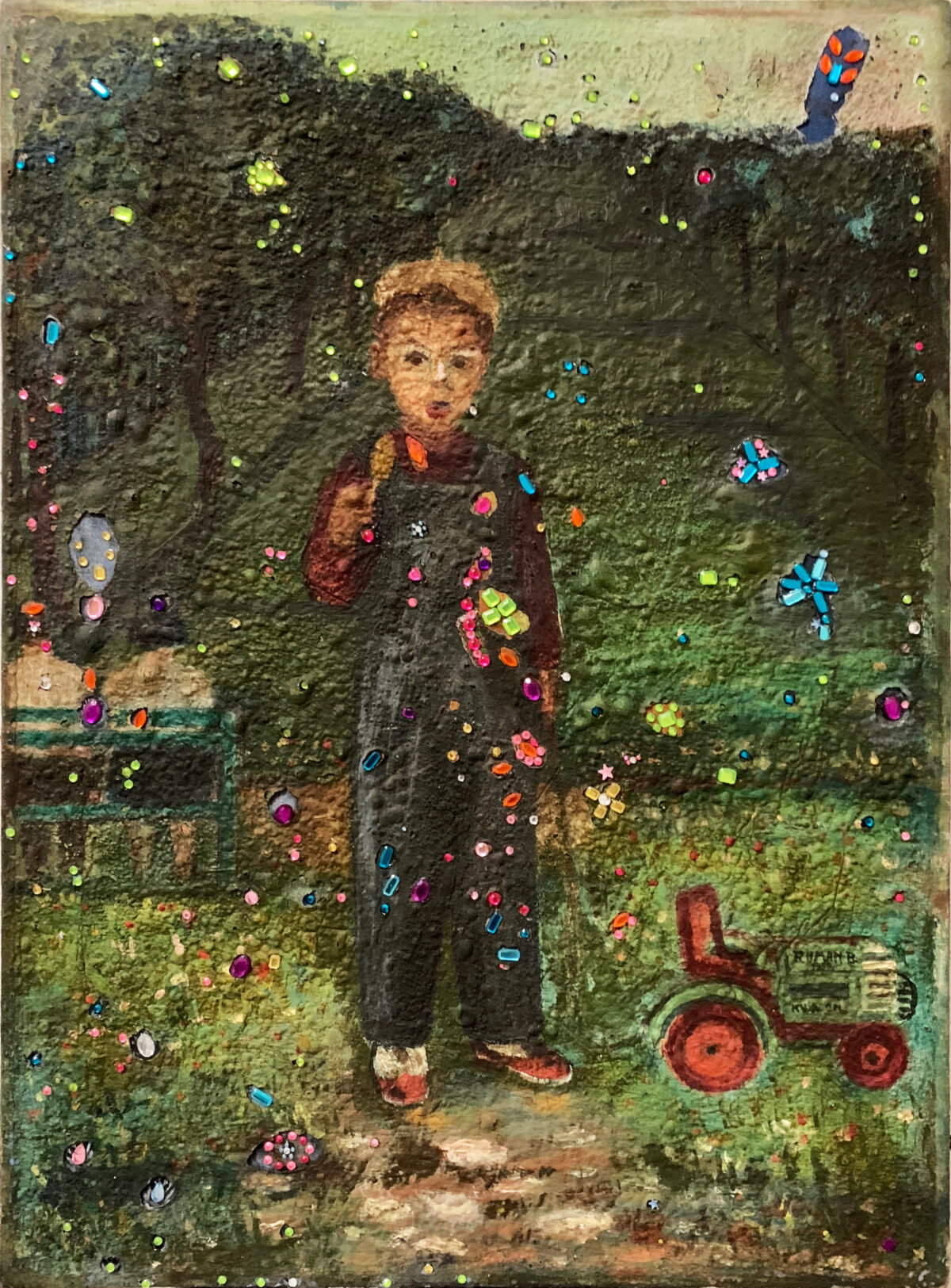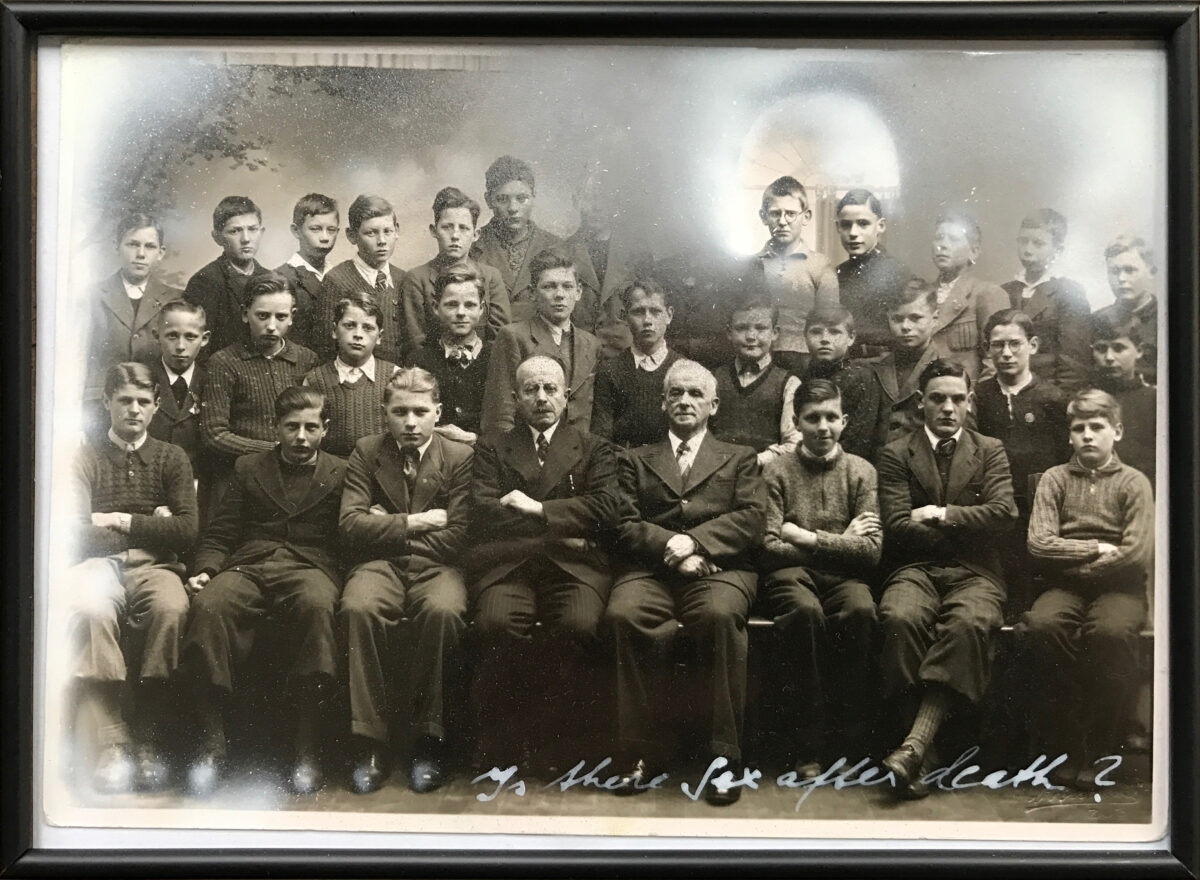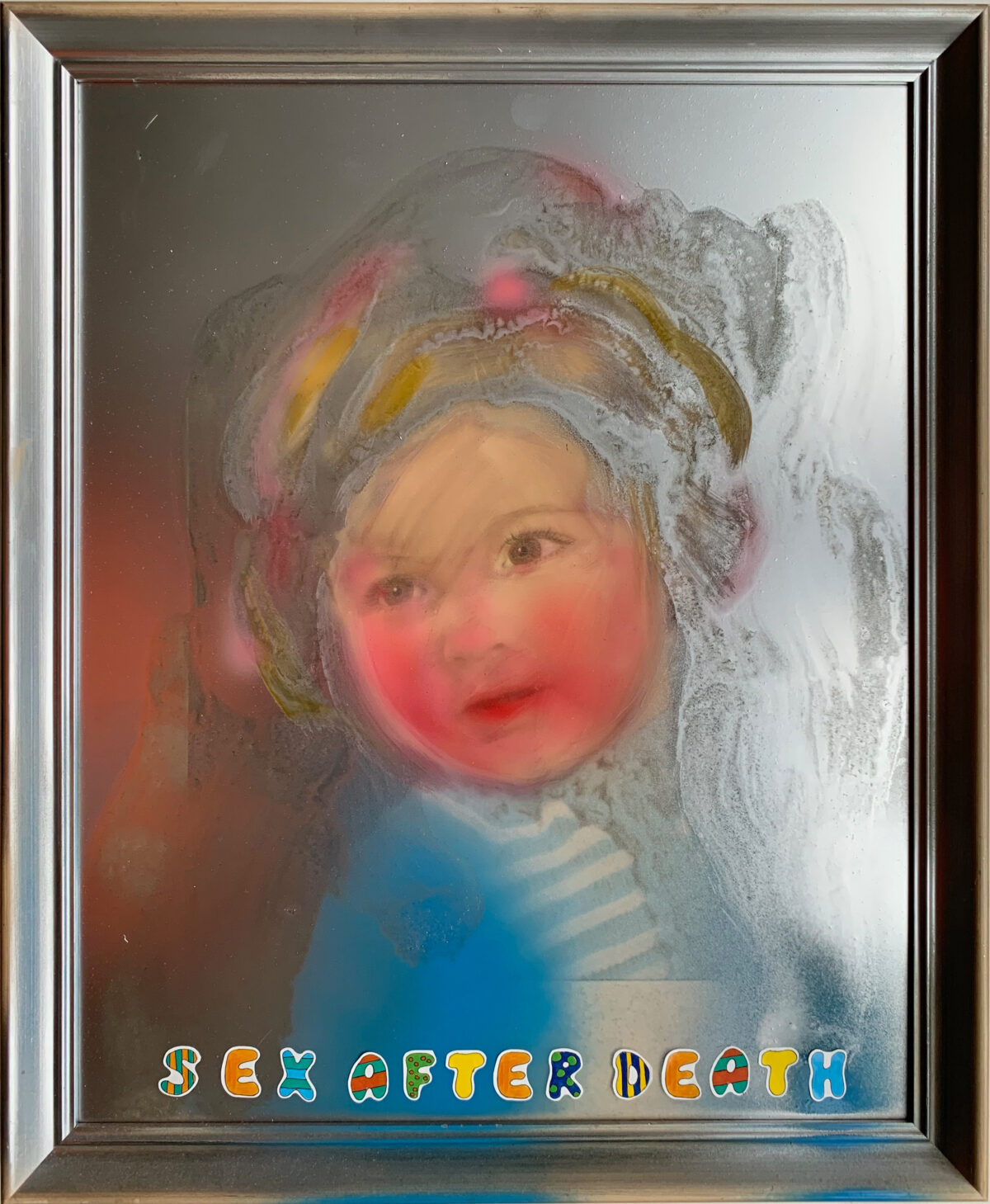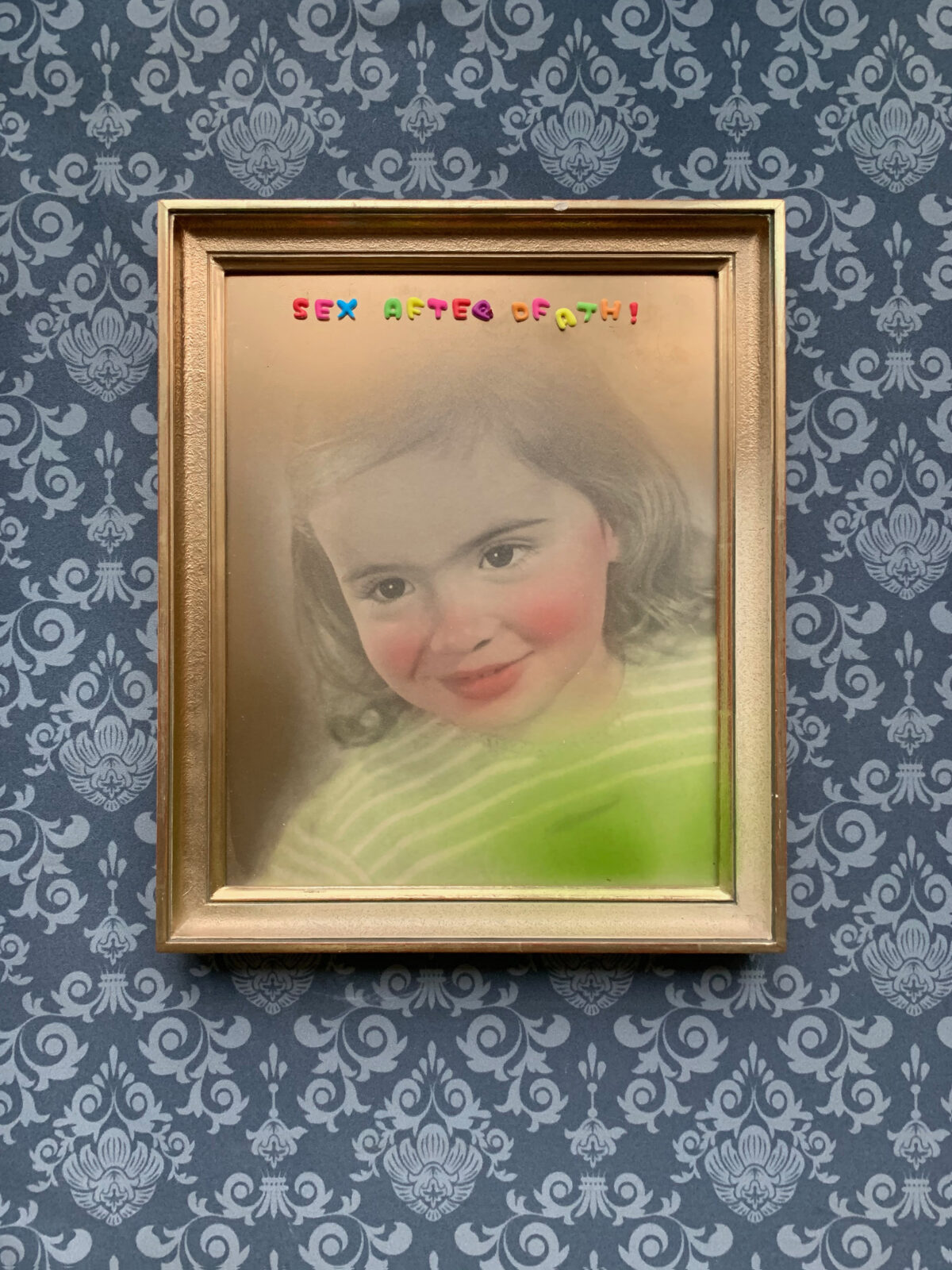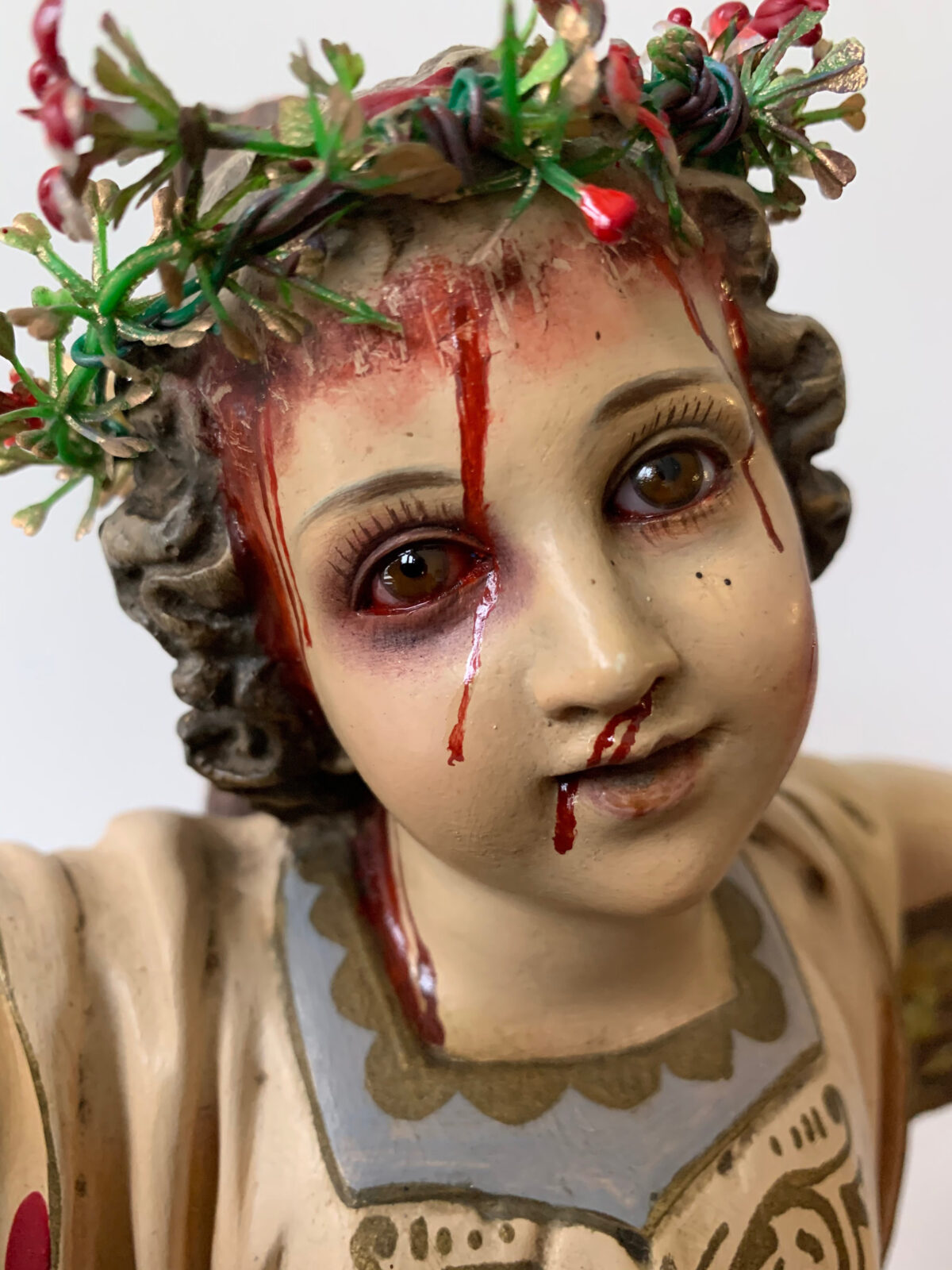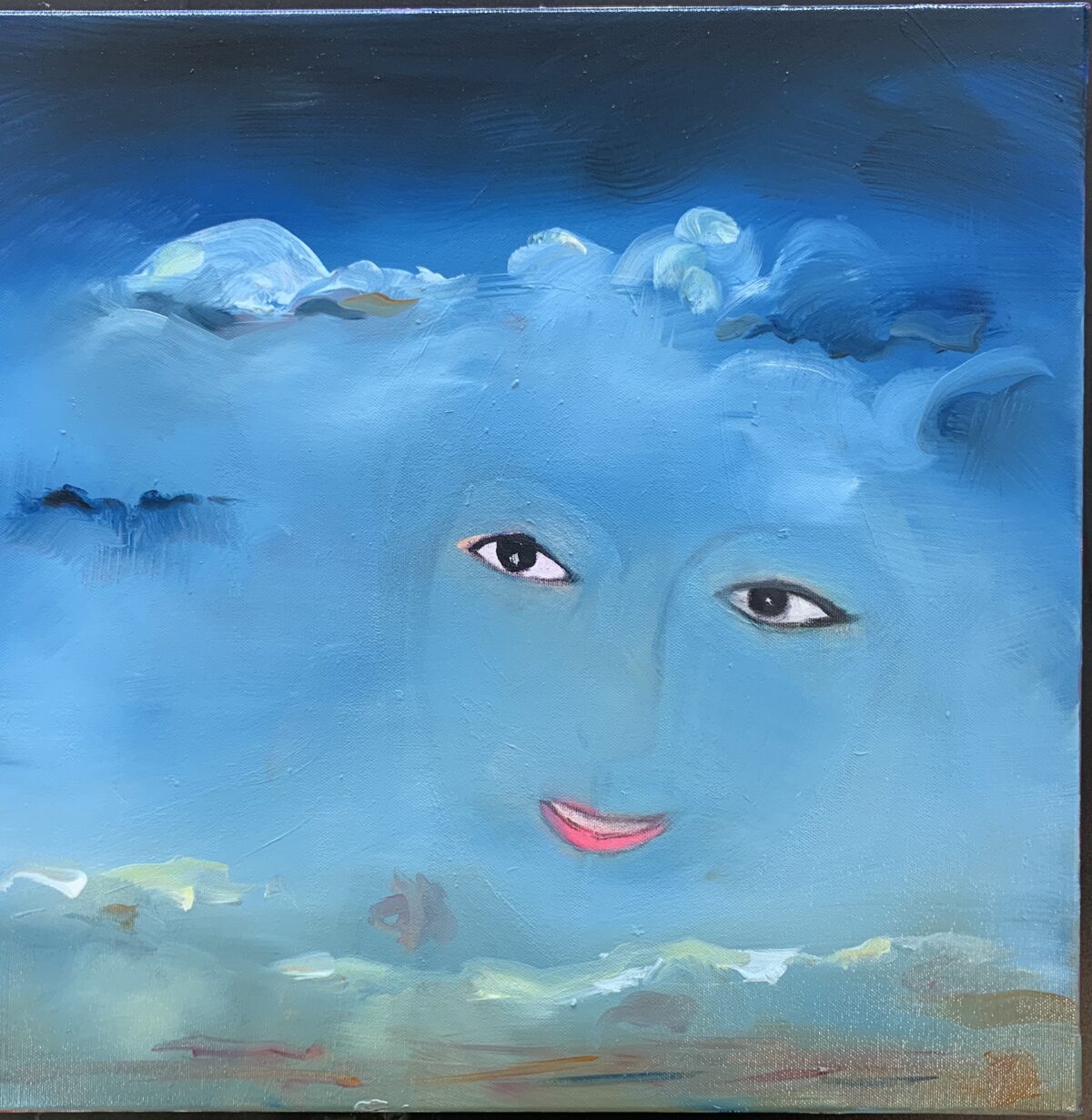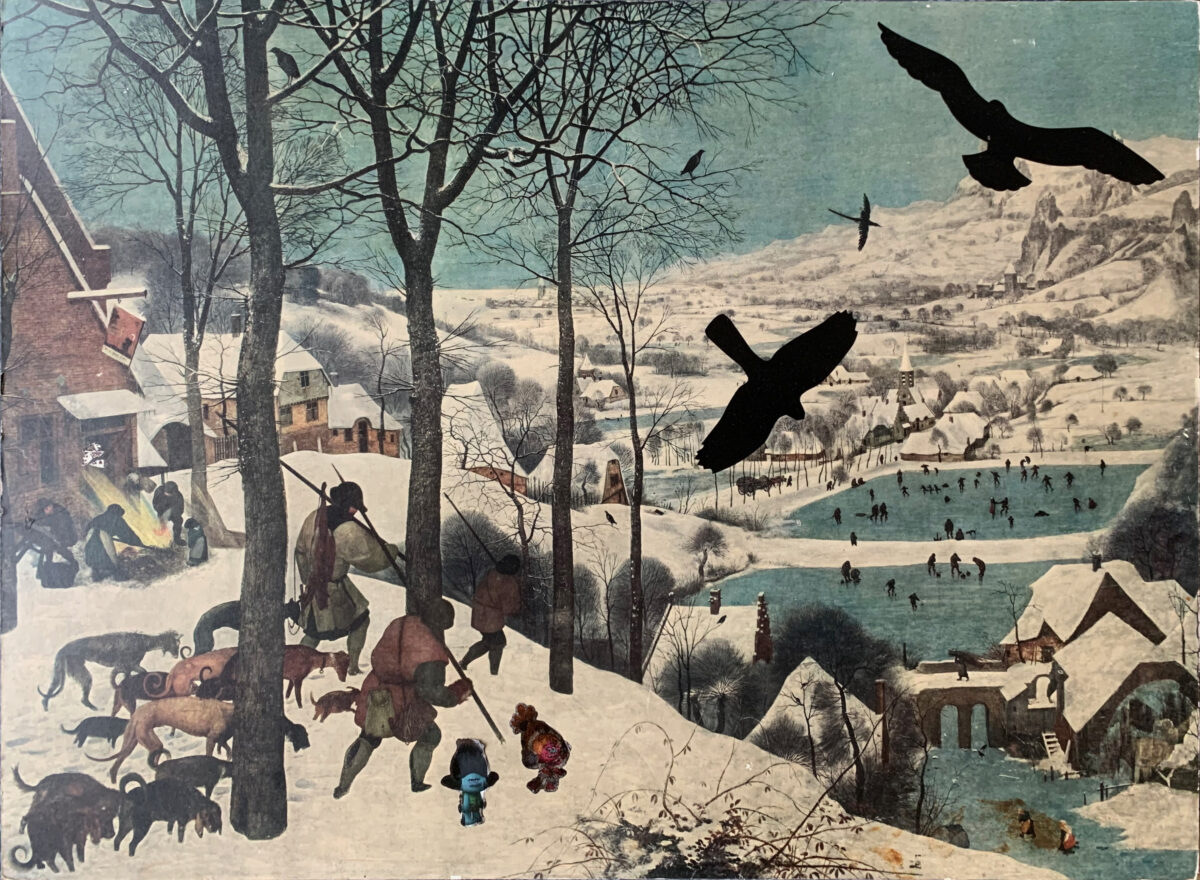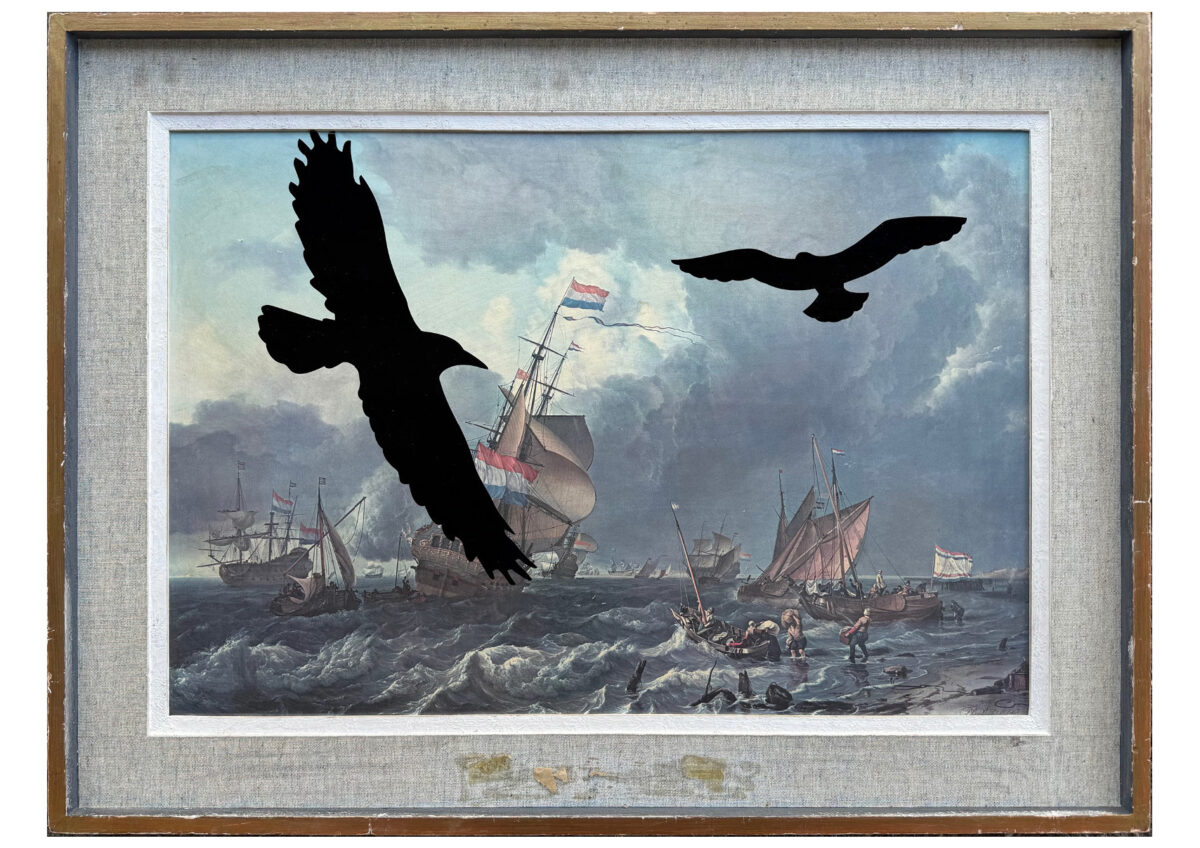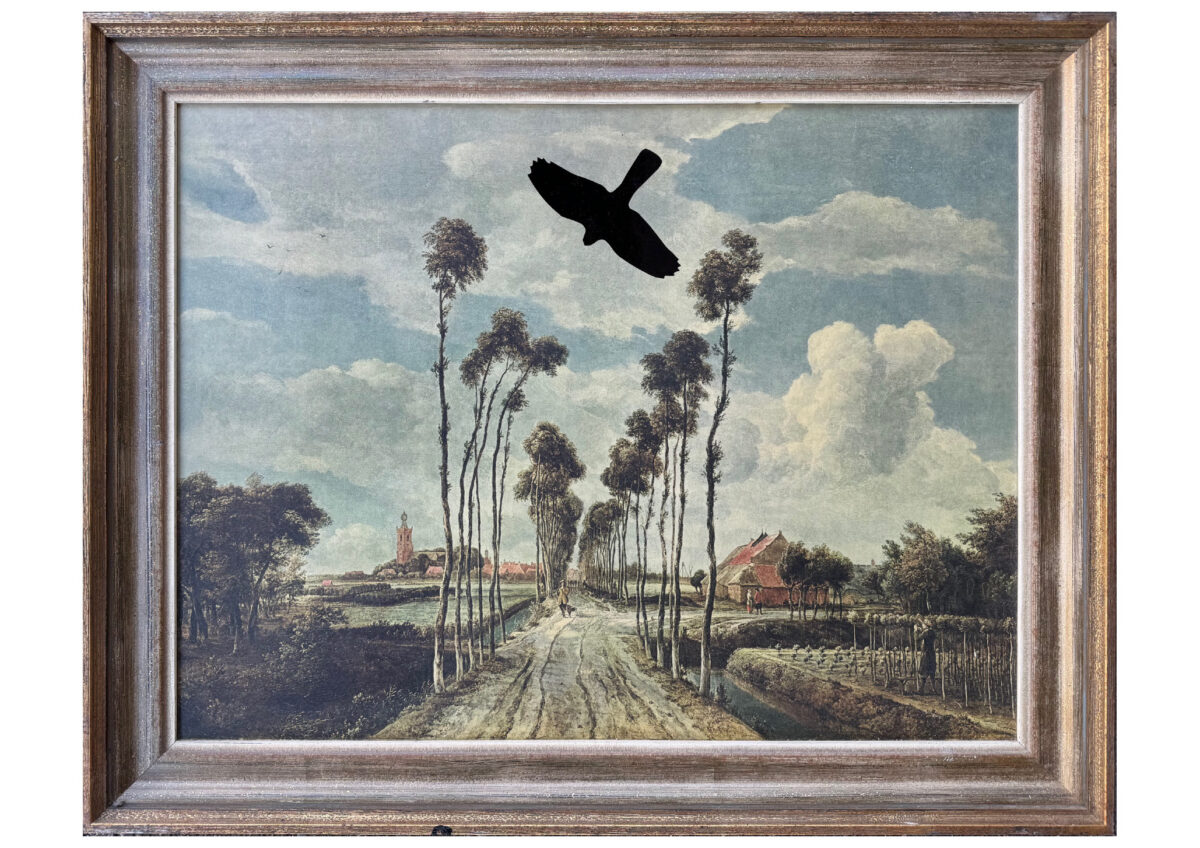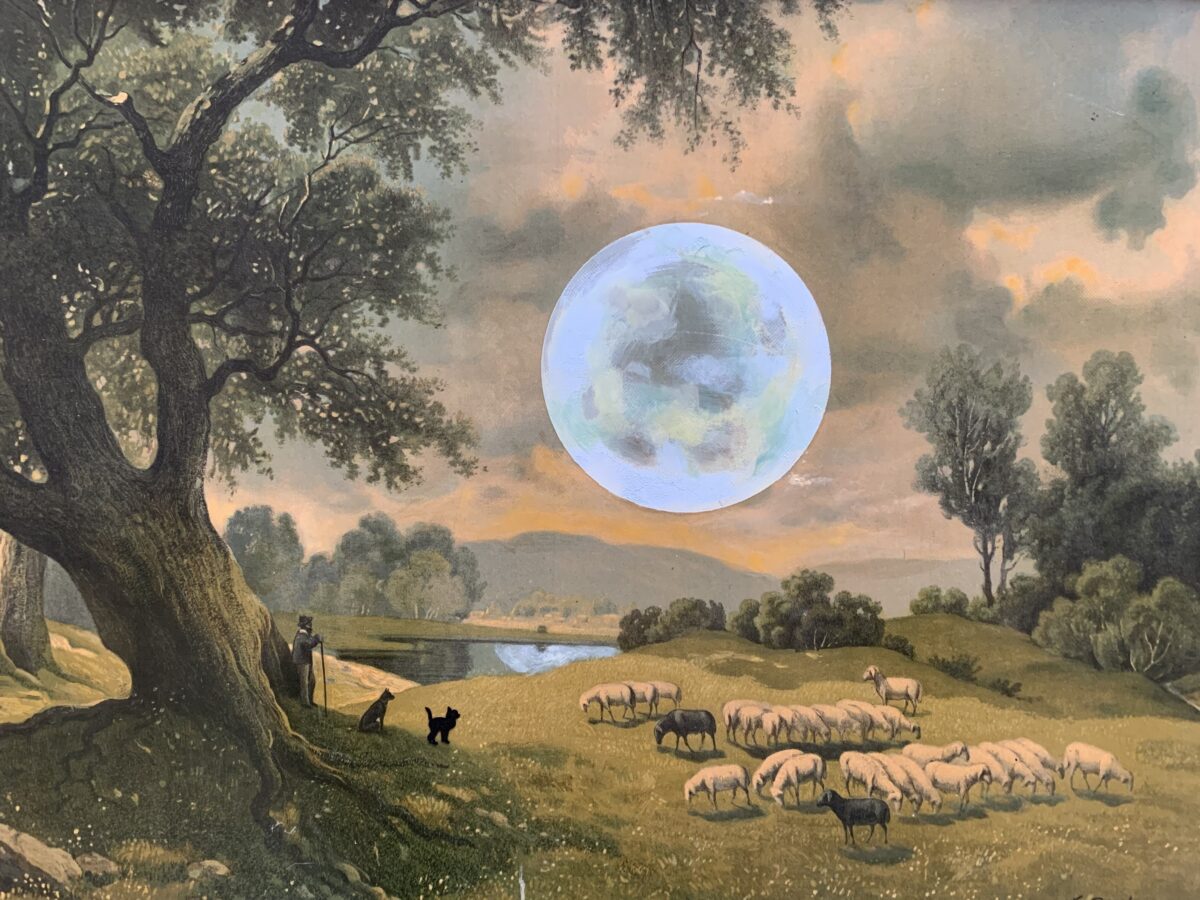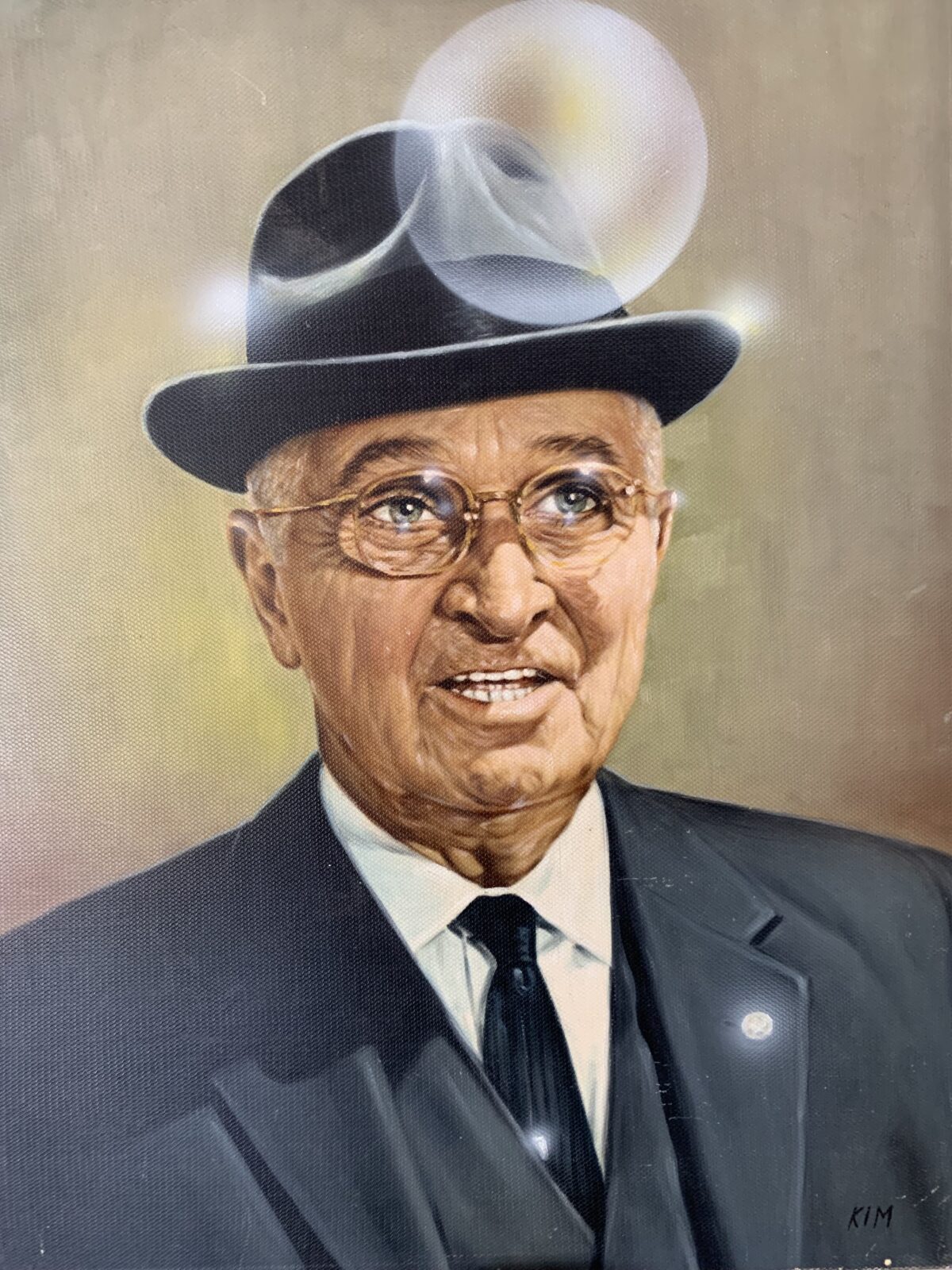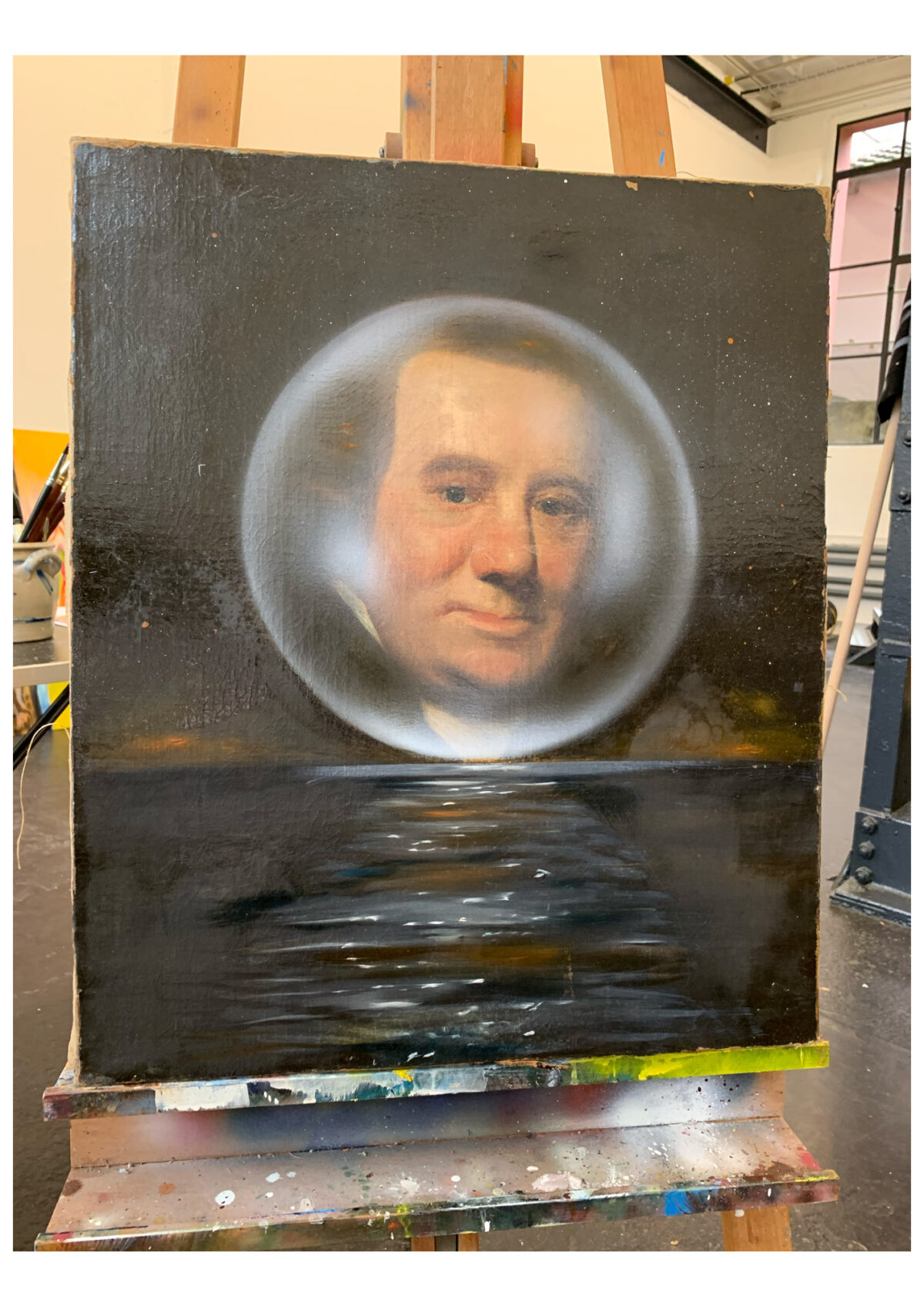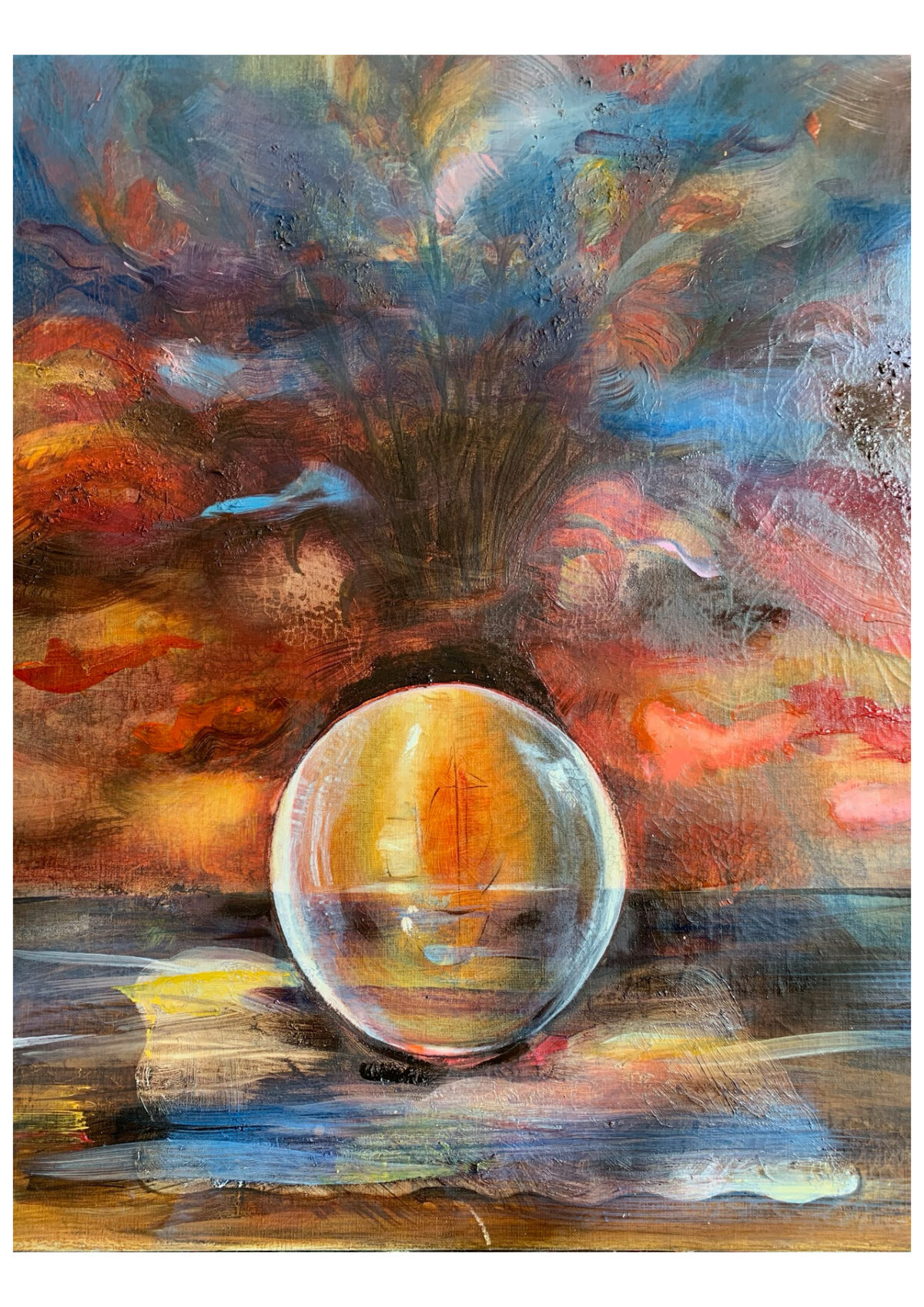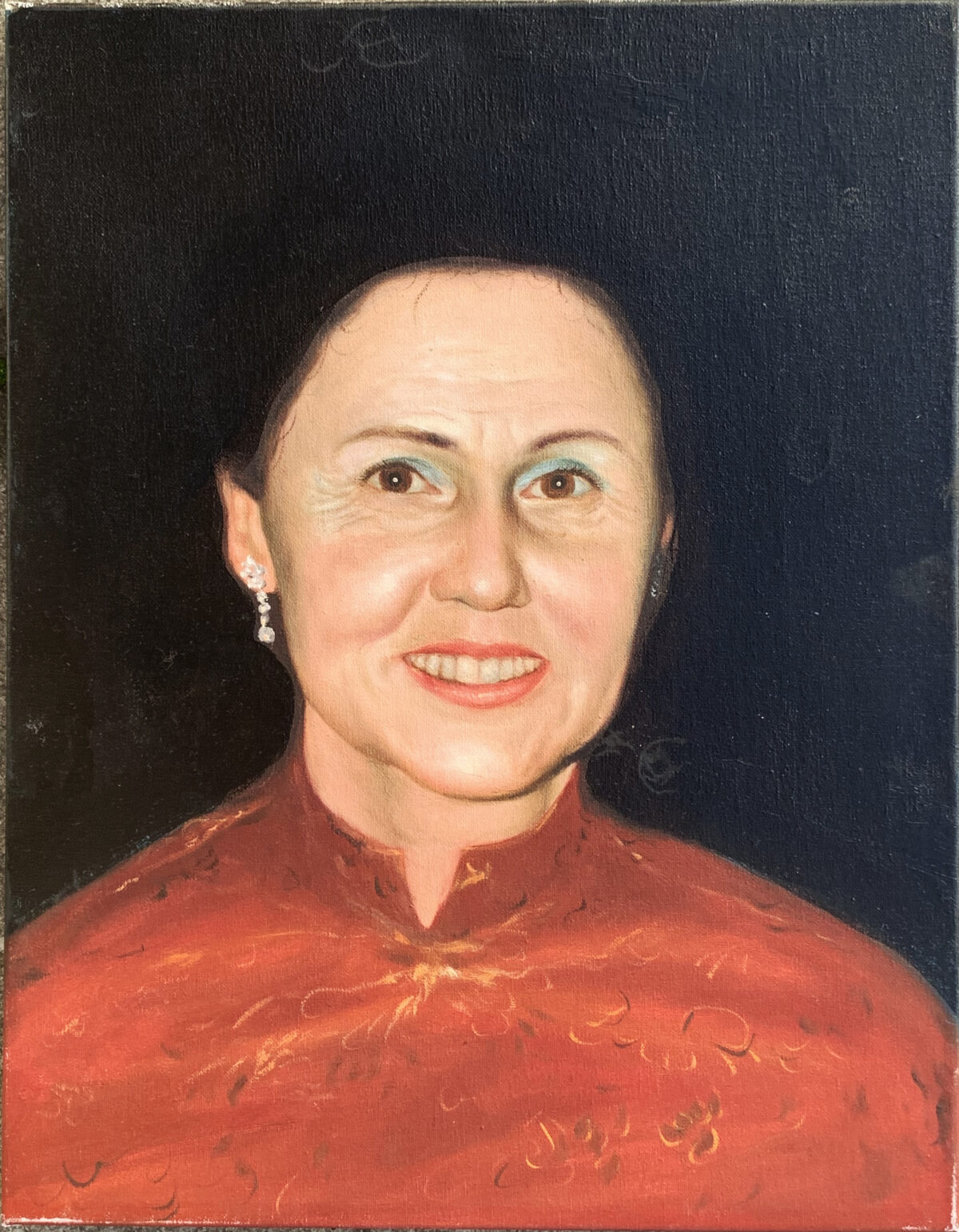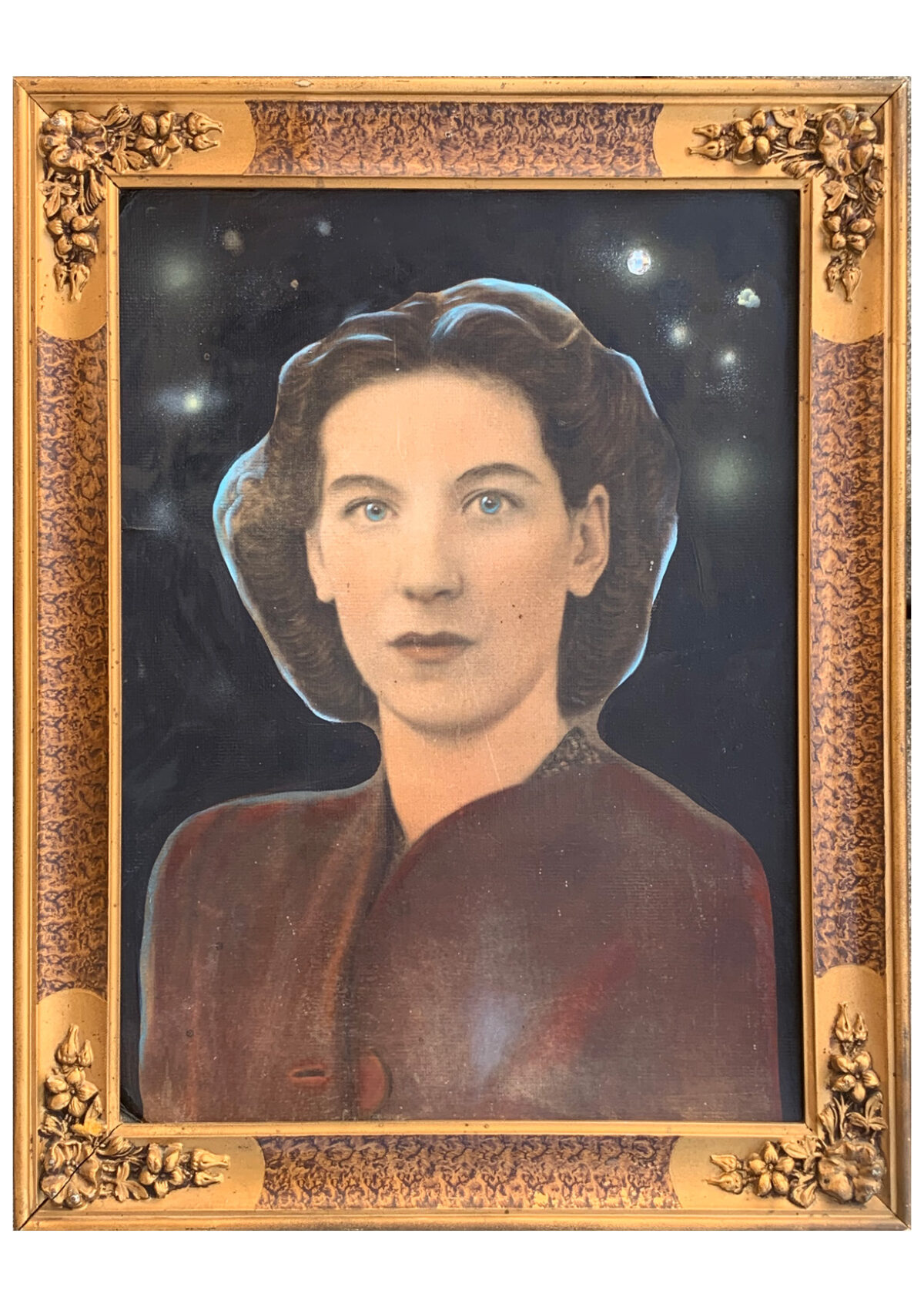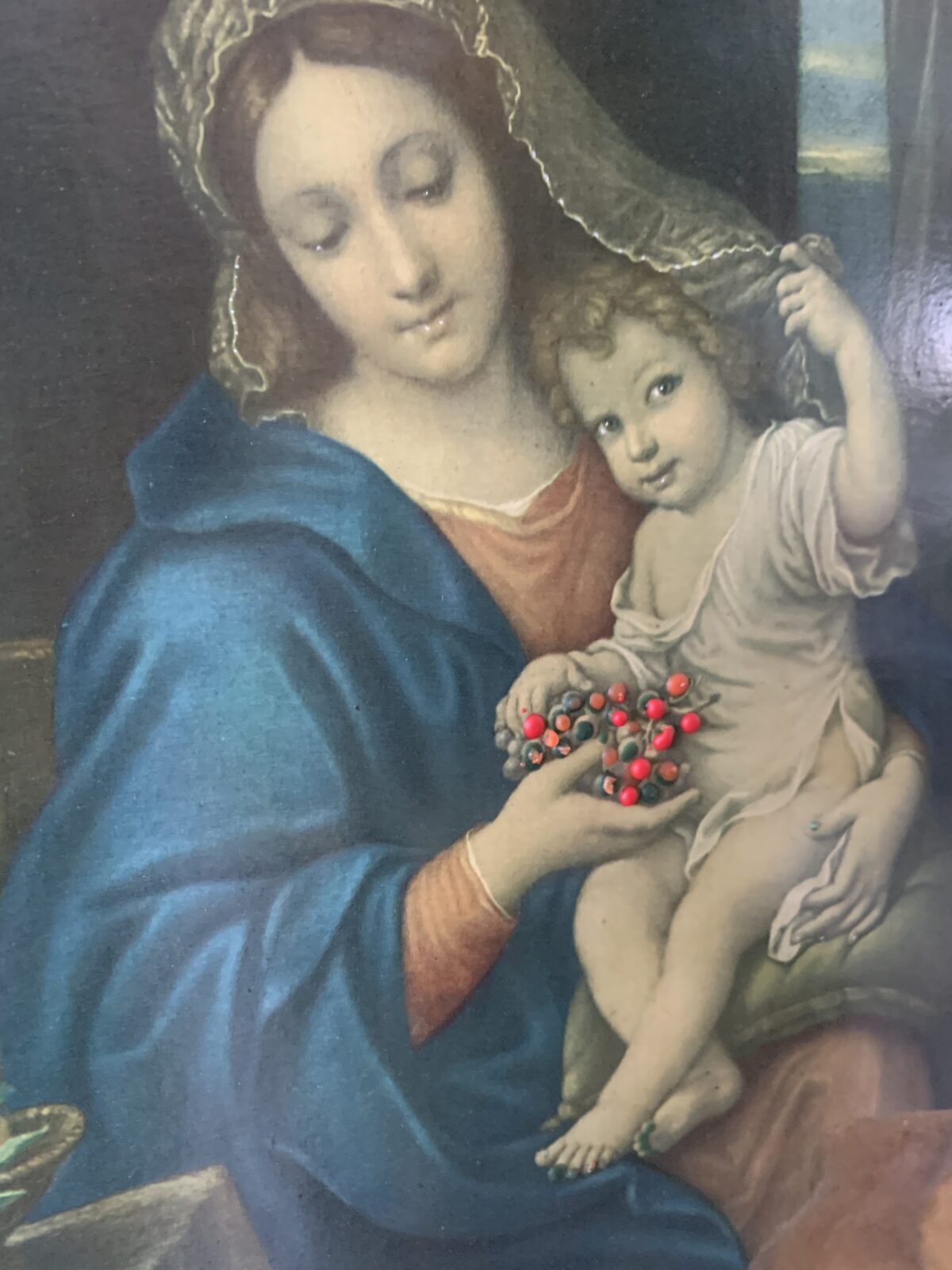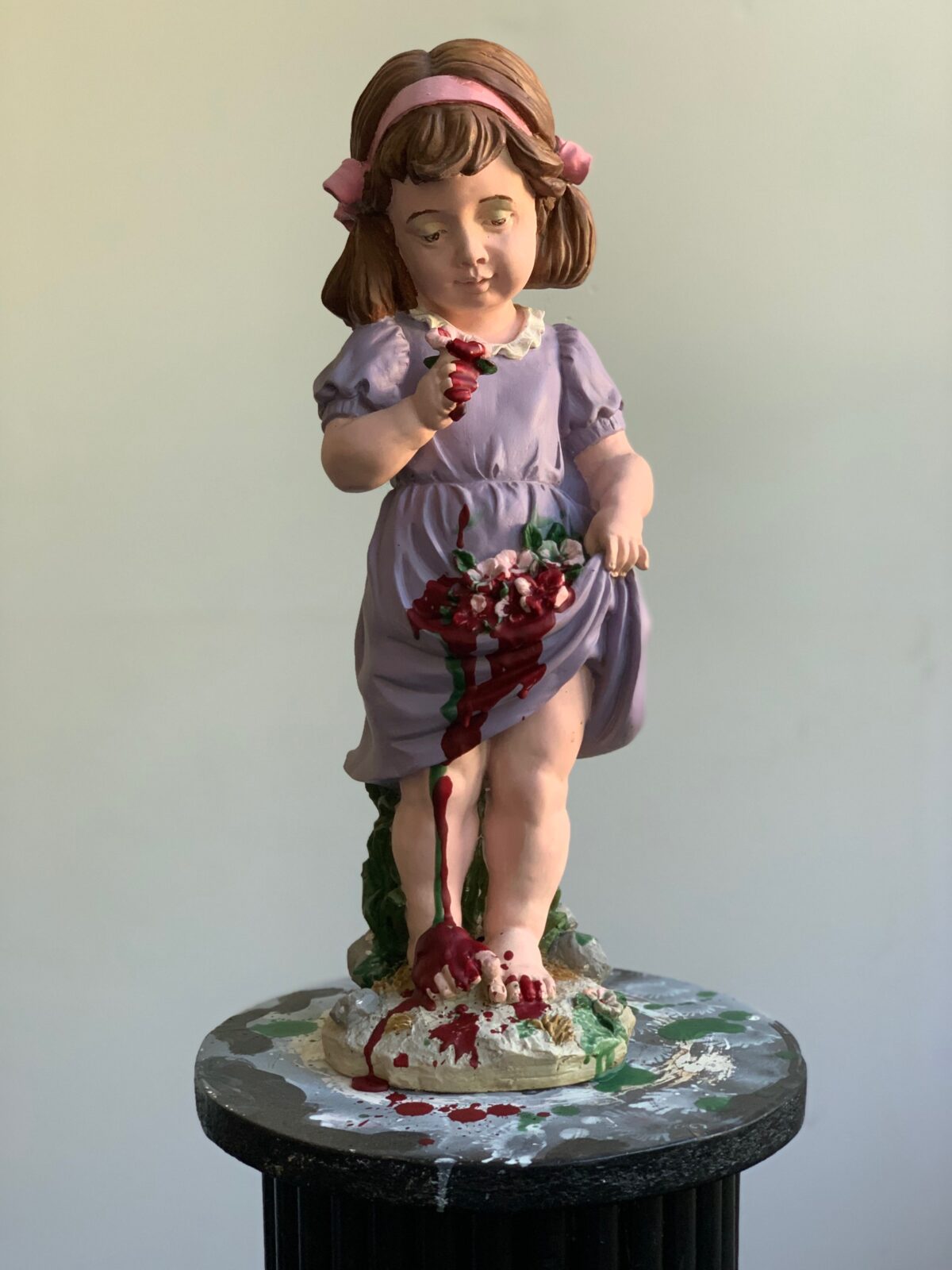Do dead pictures also go to heaven?
2015 – present
“When people die, their houses and apartments are cleared out. Most furniture, carpets and clothes are thrown away and burned. Some items manage to survive the death of their former owners. What the heirs don’t keep is offered for sale at the second-hand dealer. For decades, I have been fascinated by the abandoned pictures in the “Brockenhäuser”, as the second-hand shops are called in Switzerland. The pictures that once adorned the walls of apartments, now carelessly stacked on shelves, have served their purpose. They are dead pictures. Most of the pictures are kitschy wall decorations or timid attempts by amateur painters. The hunger for pictures is in all of us. They reflect the needs of the former owners: security, safety, hope, beauty. The motifs repeat themselves: flowers, landscapes, animals and religious images. Sometimes I find photographic or painted portraits of the deceased. The world of images beyond the art world have always fascinated me. I am particularly drawn to religious images. An ancient function of art from the pre-Reformation period is still effective here: the icon blesses and protects the viewer. The (healing) power of the saints works through the image. The image as a window to heaven. A dwindling world of images of touching naivety. Mary with the baby Jesus, the weeping Mary, but then also more modern secularized variants, the weeping children without Mary and the yearning virgins without children. As early as the 1990s, I was building objects from old images and picture frames. Why paint myself when there are already so many images? Since then, I have been collecting whatever “dead” images I find. Sometimes I continue painting, improving, interpreting and adding to them. As a young artist, I was interested in the image as a commodity and the abuse of aesthetics by ideologies in totalitarian systems or religions. An exhibition in the Rudolfinum in Prague was called “My Art” and dealt with the drawings of Adolf Hitler. Kitsch Kills! In the works of recent years I have dealt with the kitsch factor more benevolently. Instead of exposing, I try to empathize, to imitate. I paint flowers, landscapes and sunsets. The existing picture dictates and I follow the author. If things go well, we reach a kind of balance. Art a deux – a bridge over time. The portraits of people that I find in the second-hand shop have died twice. First the person died. But the photograph or the painted portrait lived on – as a memory. Only when the memory died did the picture go into the second-hand shop. The dead in the pictures that I paint have no names. I take them in. I adopt dead pictures. When we find each other, they get a new life and a new name. Old photographs often lack the color red. The photographic portraits of the time before color photography were often colored by hand so that the portrait appeared “alive.” In the past hundred years or so, the colors faded – red faded most quickly. When I reanimate a dead picture, red is very important. Red is life and love. Is there love after death? Is there sex after death? Amateur painting offered an excellent starting point for investigations into the meaning and purpose of painting. Landscapes, flower paintings and portraits were the starting materials for an investigation of “dead pictures.” Do dead pictures also go to heaven? I asked the landscapes, flower paintings and portraits of long-dead amateurs. An important aspect of painting is the pursuit of eternity. A Mona Lisa will live forever. But if the artist fails, his works will not make it to heaven. I was once a young artist with potential too. In the 1990s, I was able to hold solo exhibitions in art galleries and museums and stage performances on the best stages in Vienna, Zurich and Prague. Many artists are called, few are chosen. I failed too and my work was forgotten. My works will not make it to heaven either. Religious images in particular address the human longing to overcome death. A kitschy depiction of a loving Mary with the baby Jesus used to fulfil this function. These objects no longer fit into our urban living environment. They are sorted out and disposed of. What can I do? How can I breathe new life into the dead images? I enter into a painterly dialogue with the dead image and try to reanimate it. A small cynical gesture redeems an image from its tragic weight. Perhaps we can only get to paradise by laughing.”
- RB, December 2024
“When people die, their houses and apartments are cleared out. Most furniture, carpets and clothes are thrown away and burned. Some items manage to survive the death of their former owners. What the heirs don’t keep is offered for sale at the second-hand dealer. For decades, I have been fascinated by the abandoned pictures in the “Brockenhäuser”, as the second-hand shops are called in Switzerland. The pictures that once adorned the walls of apartments, now carelessly stacked on shelves, have served their purpose. They are dead pictures. Most of the pictures are kitschy wall decorations or timid attempts by amateur painters. The hunger for pictures is in all of us. They reflect the needs of the former owners: security, safety, hope, beauty. The motifs repeat themselves: flowers, landscapes, animals and religious images. Sometimes I find photographic or painted portraits of the deceased. The world of images beyond the art world have always fascinated me. I am particularly drawn to religious images. An ancient function of art from the pre-Reformation period is still effective here: the icon blesses and protects the viewer. The (healing) power of the saints works through the image. The image as a window to heaven. A dwindling world of images of touching naivety. Mary with the baby Jesus, the weeping Mary, but then also more modern secularized variants, the weeping children without Mary and the yearning virgins without children. As early as the 1990s, I was building objects from old images and picture frames. Why paint myself when there are already so many images? Since then, I have been collecting whatever “dead” images I find. Sometimes I continue painting, improving, interpreting and adding to them. As a young artist, I was interested in the image as a commodity and the abuse of aesthetics by ideologies in totalitarian systems or religions. An exhibition in the Rudolfinum in Prague was called “My Art” and dealt with the drawings of Adolf Hitler. Kitsch Kills! In the works of recent years I have dealt with the kitsch factor more benevolently. Instead of exposing, I try to empathize, to imitate. I paint flowers, landscapes and sunsets. The existing picture dictates and I follow the author. If things go well, we reach a kind of balance. Art a deux – a bridge over time. The portraits of people that I find in the second-hand shop have died twice. First the person died. But the photograph or the painted portrait lived on – as a memory. Only when the memory died did the picture go into the second-hand shop. The dead in the pictures that I paint have no names. I take them in. I adopt dead pictures. When we find each other, they get a new life and a new name. Old photographs often lack the color red. The photographic portraits of the time before color photography were often colored by hand so that the portrait appeared “alive.” In the past hundred years or so, the colors faded – red faded most quickly. When I reanimate a dead picture, red is very important. Red is life and love. Is there love after death? Is there sex after death? Amateur painting offered an excellent starting point for investigations into the meaning and purpose of painting. Landscapes, flower paintings and portraits were the starting materials for an investigation of “dead pictures.” Do dead pictures also go to heaven? I asked the landscapes, flower paintings and portraits of long-dead amateurs. An important aspect of painting is the pursuit of eternity. A Mona Lisa will live forever. But if the artist fails, his works will not make it to heaven. I was once a young artist with potential too. In the 1990s, I was able to hold solo exhibitions in art galleries and museums and stage performances on the best stages in Vienna, Zurich and Prague. Many artists are called, few are chosen. I failed too and my work was forgotten. My works will not make it to heaven either. Religious images in particular address the human longing to overcome death. A kitschy depiction of a loving Mary with the baby Jesus used to fulfil this function. These objects no longer fit into our urban living environment. They are sorted out and disposed of. What can I do? How can I breathe new life into the dead images? I enter into a painterly dialogue with the dead image and try to reanimate it. A small cynical gesture redeems an image from its tragic weight. Perhaps we can only get to paradise by laughing.”
- RB, December 2024
